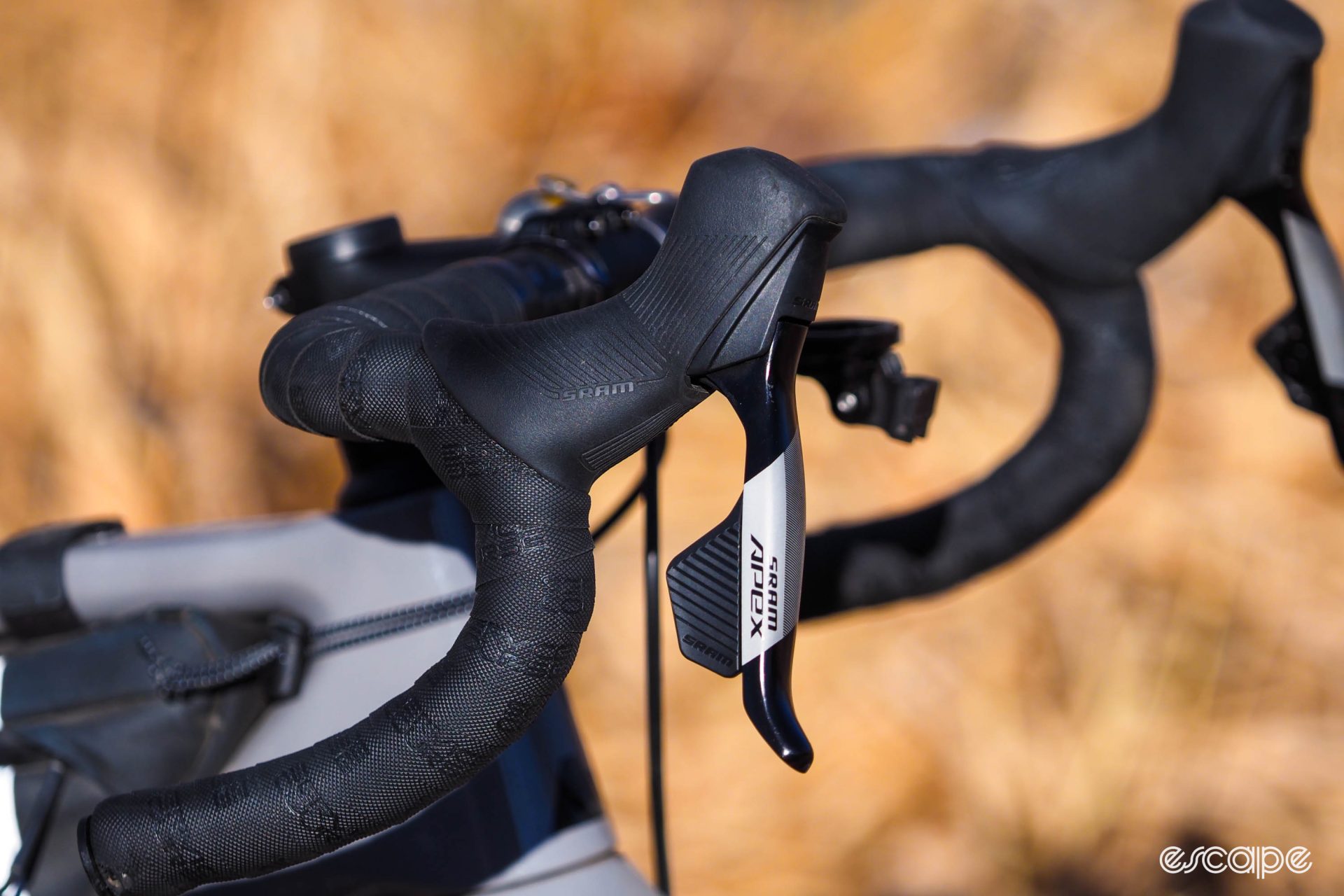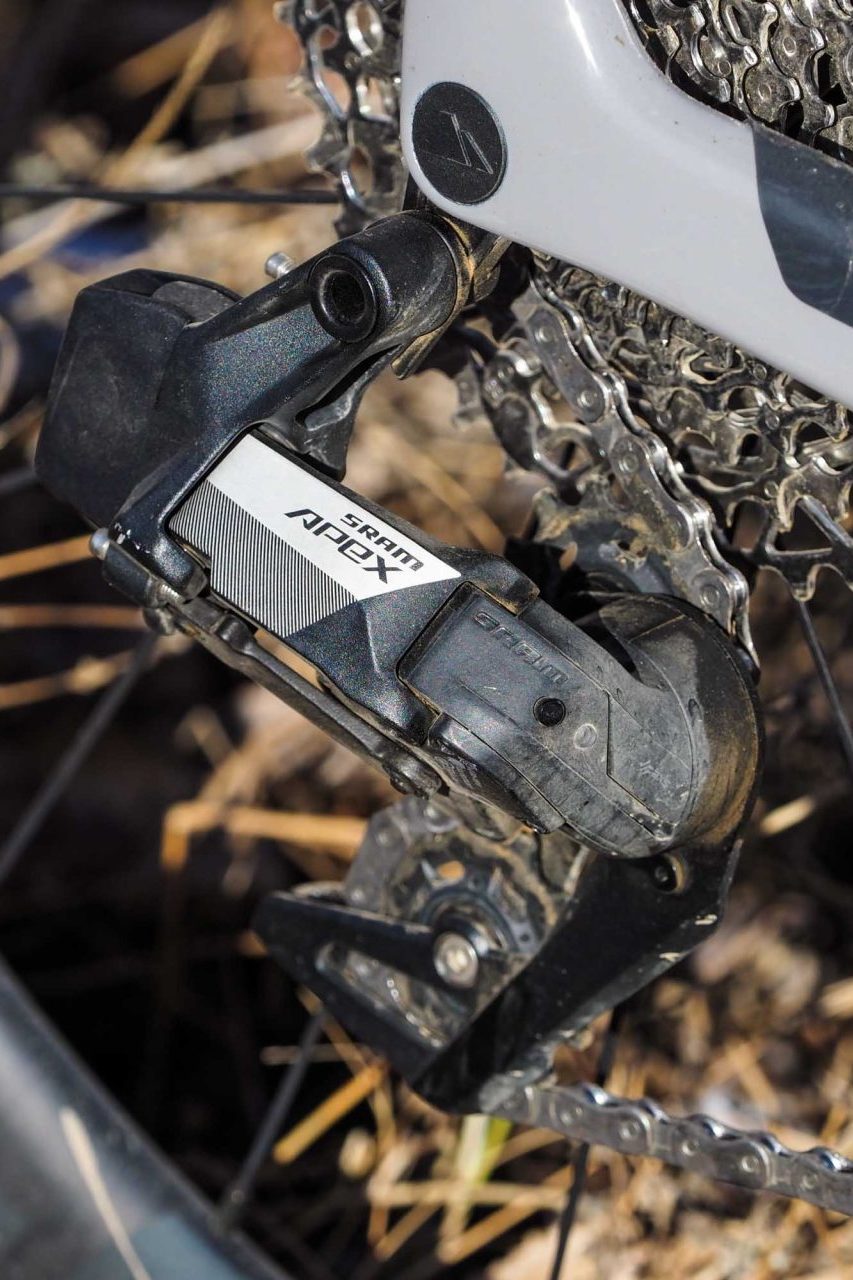At its inception, electronic shifting was framed as a high-end, performance-oriented technology with the promise of robotically perfect shifting each time, every time, no matter what. As with most things electronic, the dream has always been that as the costs decreased over time, that technology could be made more readily available to the masses.
It’s taken 16 years, but we’ve now gotten pretty darn close.
Shimano may have been the first brand to get electronic shifting right with the original Dura-Ace Di2 in 2008, but the last six months have confirmed to me that SRAM is the first brand to finally turn the long-awaited democratic dream for the technology into reality with Apex AXS. It’s the least expensive mainstream electronic option by a wide margin at US$1,195 / AU$2,054 / £1,227 / €1,371 for a complete setup with brakes and rotors, and while it’s certainly not without its quirks and drawbacks, SRAM has gotten all the important stuff down.
The short of it: The same AXS electronic shifting technology found on flagship-level SRAM road groupsets, distilled into a far more attainable price point.
Good stuff: Outstanding shifting performance, simplified configurations, solid braking performance, very good ergonomics, optional power meter, doesn’t require a second mortgage.
Bad stuff: Narrower cassette range than other SRAM XPLR gravel groupsets, weird hood-to-bar transition, disposable remote shift buttons, unimpressive on the scale.
The basics
I outlined the ins and outs of the new Apex AXS groupset in detail when it was launched this past June, but here’s a quick recap in case you don’t feel like heading back for the full rundown.
SRAM moved this latest generation of Apex to a 12-speed cassette format, following the lead of the rest of its road groupsets, and uses the same proprietary FlatTop chain dimensions and cassette sprocket geometry. But while Rival, Force, and Red AXS groups are offered in both 1x and 2x formats with XDR-splined cassette interfaces, Apex is available solely with a single-chainring drivetrain setup, with either an 11-44T XPLR or 11-50T Eagle cassette – and which mounts to a more common Shimano HG-style freehub body.
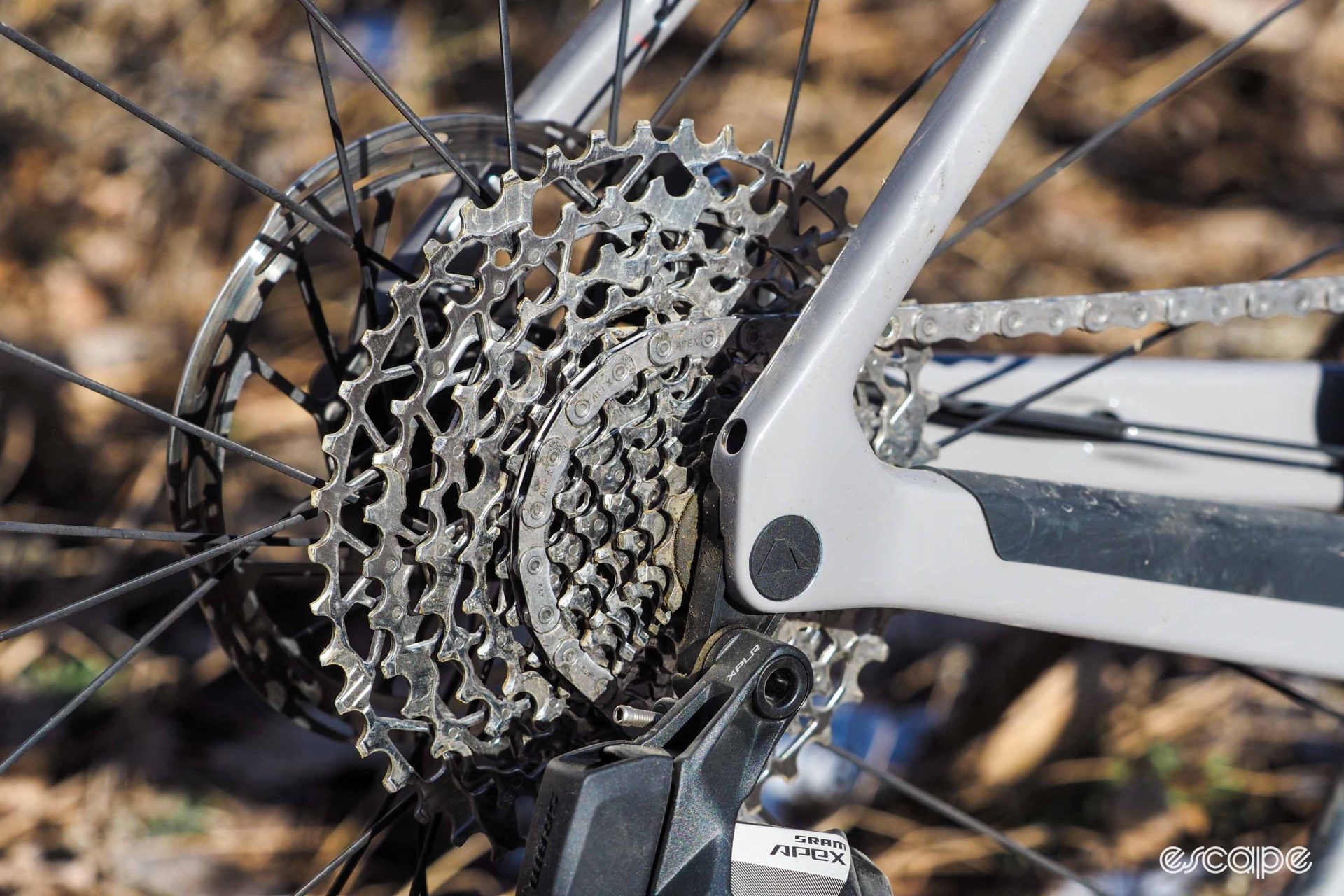
As you’d expect, there are various elements of cost-cutting sprinkled throughout Apex AXS as compared to those more expensive AXS groupsets that allow SRAM to hit that rather aggressive price point. In some cases, it’s changes in materials, i.e. steel for aluminum, aluminum for composites, bushings for bearings, and so on. In others, it’s changes in manufacturing processes (melt-forging instead of cold-forging, casting instead of forging, stamping instead of casting, etc.). There are also less-refined finishes, such as painted surfaces instead of anodized ones, and definitely less polishing.
Taken in total, these changes add some weight to Apex AXS, but perhaps not as much as you might expect. The group overall is only about 100 g heavier than an equivalent Rival AXS setup, although it’s worth noting Rival AXS is already pretty hefty. Looking at it from an absolute sense, the Apex AXS XPLR groupset is anything but light at 2,874 g all-in, including a set of levers with hoses and calipers (without caliper adapters or mounting hardware), a rear derailleur with battery, 170 mm-long crankarms with a 40-tooth aluminum chainring and the optional power meter, a 11-44T cassette, and a pair of 160 mm-diameter Paceline Center Lock rotors. A pair of wireless Blips add another 14 g.
That’s pretty much exactly inline with SRAM’s claimed numbers, but here’s a breakdown of my actual figures:
| SRAM Apex AXS shift/brake lever and brake caliper, left: | 384 g |
| SRAM Apex AXS shift/brake lever and brake caliper, right: | 399 g |
| SRAM Apex AXS crankset (170 mm, 40T aluminum chainring, with power meter): | 741 g |
| SRAM Apex AXS XPLR rear derailleur (with battery): | 348 g |
| SRAM PG-1231 11-44T cassette (with lockring): | 426 g |
| SRAM Apex AXS chain (118 links): | 258 g |
| SRAM Paceline Center Lock rotors (160 mm, without lockring, each): | 159 g |
| SRAM wireless Blips (pair): | 14 g |
Critically, though, SRAM hasn’t cut any corners in terms of shifting performance.
The electronic guts – the motors, controllers, transmitters, and so on – are identical to other AXS models, and the geometry on the cassette sprockets, chainrings, and chains is also essentially unchanged from Rival, Force, and Red.

When I first heard that SRAM was going to debut an Apex-level AXS groupset, I’d expected the brand to at least recycle the older-generation lever shape as a way to nudge prospective buyers upstream, but even that didn’t pan out; the Apex AXS levers inherit the more compact form from Rival and Force (the older Red stuff surely isn’t far behind). And although there are no ports in the levers for wired remotes, the levers are still compatible with SRAM’s new wireless Blips controllers – up to six of them, in fact. There are also no restrictions in terms of AXS wireless cross-compatibility, which opens a lot of doors in terms of mixing and matching bits.
The proof and the pudding
I left the launch event for SRAM’s new Apex AXS groupset with excellent first impressions, but also wondering if there might be any surprises further down the road. Six months later, the aspects that bugged me then still bug me now, but I haven’t uncovered anything new annoyances, and perhaps more importantly, none of the positive attributes have lost any of their luster.
First, the good stuff.
The thing that everyone seems to care most about is shift performance, and in that respect, Apex AXS is fantastic stuff overall. Remember that robotically perfect shifting I mentioned early on? Ask and ye shall receive. With your eyes closed, the shifting performance of Apex AXS is indistinguishable from SRAM’s more expensive AXS variants. Shifts have been exceptionally consistent and reliable, and of particular importance for riders new to electronic shifting, SRAM’s eTap-style of shift actuation continues to be the most intuitive around. Just push the button on the right-hand lever for a harder gear, or the one on the left-hand lever for an easier one. And since there’s only one chainring with Apex AXS, you don’t even have to concern yourself with what happens when you push both buttons as the same time (unless you want to use that function for something like an AXS-compatible dropper seatpost).
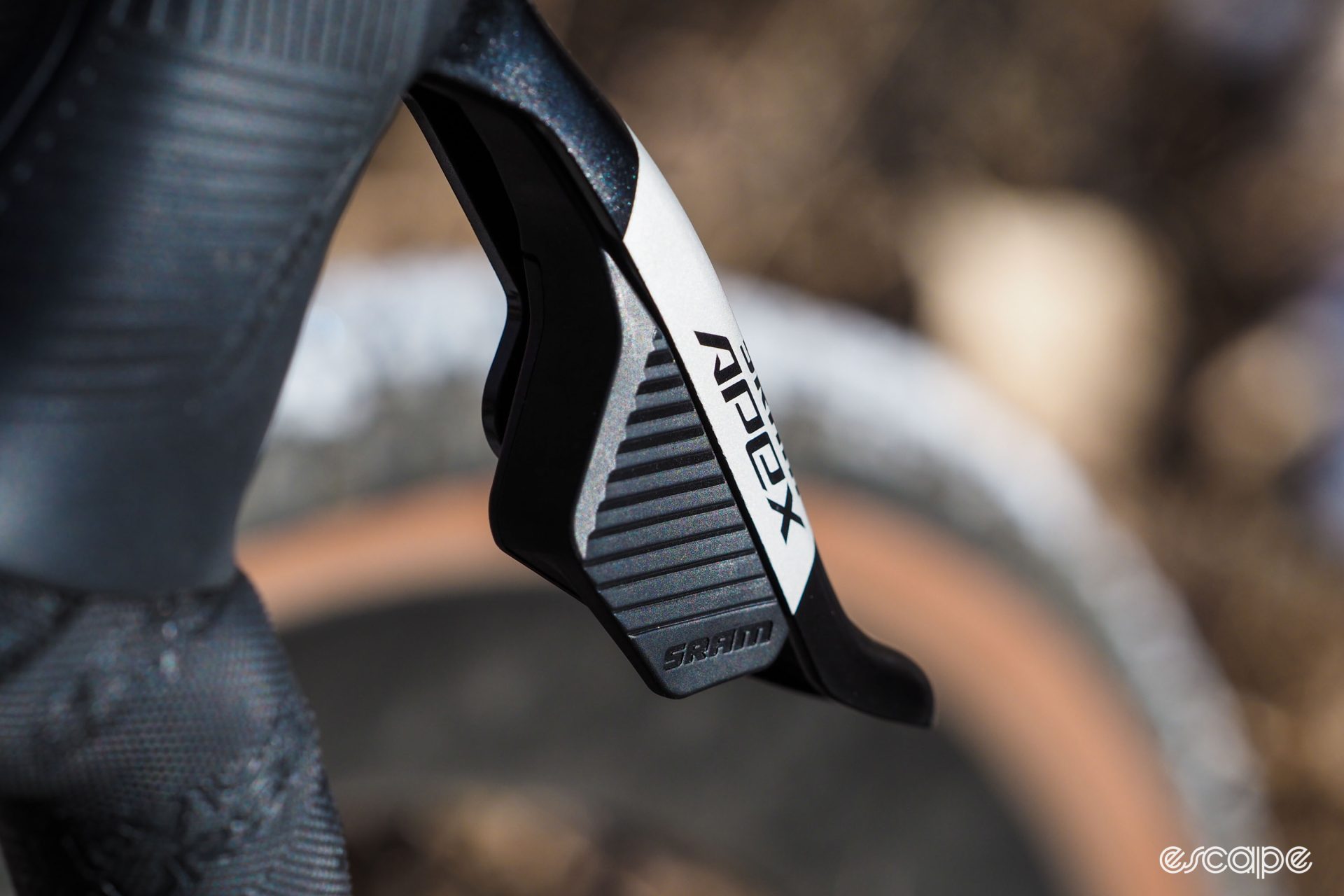
As good as it is, SRAM’s electronic shifting still isn’t quite as buttery smooth as Shimano (is anything?), since that’s more a function of the complex chain and cassette tooth profiling, much of which the Japanese company has under patent lock-and-key. But it’s also not too far off, and assuming everything is set up correctly, pushing the button on the Apex AXS shift lever gets you the gear you want, each and every time, no questions asked, and even under pretty high pedaling loads. It’s possible to trip up the system when shifting multiple gears under load – hence why multi-shifts are intentionally slower on SRAM Transmission drivetrains – but you almost have to intentionally try to foul things up to do so.
Even better, there’s been zero maintenance or adjustment required since the initial setup aside from periodic chain lube – and coming from a self-admitted devotee of traditional cable-actuated shifting, I don’t point that out lightly. In short, Apex AXS provides exactly the sort of shifting performance people who have previously wanted – but couldn’t afford – electronic shifting have been waiting for.
SRAM hasn’t left out on Apex AXS the convenient wireless features of nicer AXS groupsets, either. As already mentioned, you can connect up to six wireless Blip remote shifters to the levers, and I’ve certainly grown rather fond of able to shift from the tops. There’s no difference in shift performance when using these buttons instead of the ones built into the main controls, but it’s still a huge bummer that SRAM opted for non-replaceable batteries for these latest wireless units. Once the battery is dead (4-7 years, says SRAM), the whole thing just goes straight into the landfill. As a further annoyance, the wireless Blips are a lot bigger than the older wired stuff, and also harder to cleanly hide away underneath bar tape.

The Apex AXS hydraulic disc brakes were a pleasant high point.
SRAM ditched the adjustable bite point feature that’s included in upper-end AXS levers, but the throw on the Apex AXS levers was short enough that I didn’t miss it at all (and realistically speaking, does anyone really tune their adjustable AXS levers to have more free stroke before the pads engage?). And for sure, the more basic bleed port design on the caliper isn’t as convenient to use as SRAM’s fancier Bleeding Edge interface, but that’s mostly a matter of cleanliness and convenience, and also not something you need to worry about on a regular basis.
As with all SRAM road hydraulic disc brakes, the lever action is still heavier than I’d prefer, but the pad contact point is at least nicely defined from a tactile standpoint and there’s plenty of power on tap with excellent controllability. And while the Paceline rotors are quite heavy – particularly the Center Lock version with its stamped steel carrier – and don’t get the updated cutout pattern of the newer (and excellent) HS2 discs, I still found them to run pleasantly quietly, at least when dry.
As for the crank … well, it’s a crank. The arms are basic solid-forged aluminum bits; nothing special, although the complete assembly is lighter than I’d expected it to be. It’s nice to see SRAM including its oversized DUB aluminum spindle at this price point, and since SRAM uses a steel fixing bolt here, Apex AXS users shouldn’t ever need to source two giant breaker bars to loosen the thing like with the aluminum bolts on more expensive DUB cranks (I managed just fine with a standard-length 8 mm L-key, FYI). Similarly, kudos to SRAM for using its latest eight-bolt direct-mount chainring interface on Apex AXS instead of its legacy three-bolt design. I don’t find either to be more reliable than or functionally superior to the other, but since SRAM is phasing out its older format, it’s good to see Apex AXS users won’t be stuck with an outdated system.
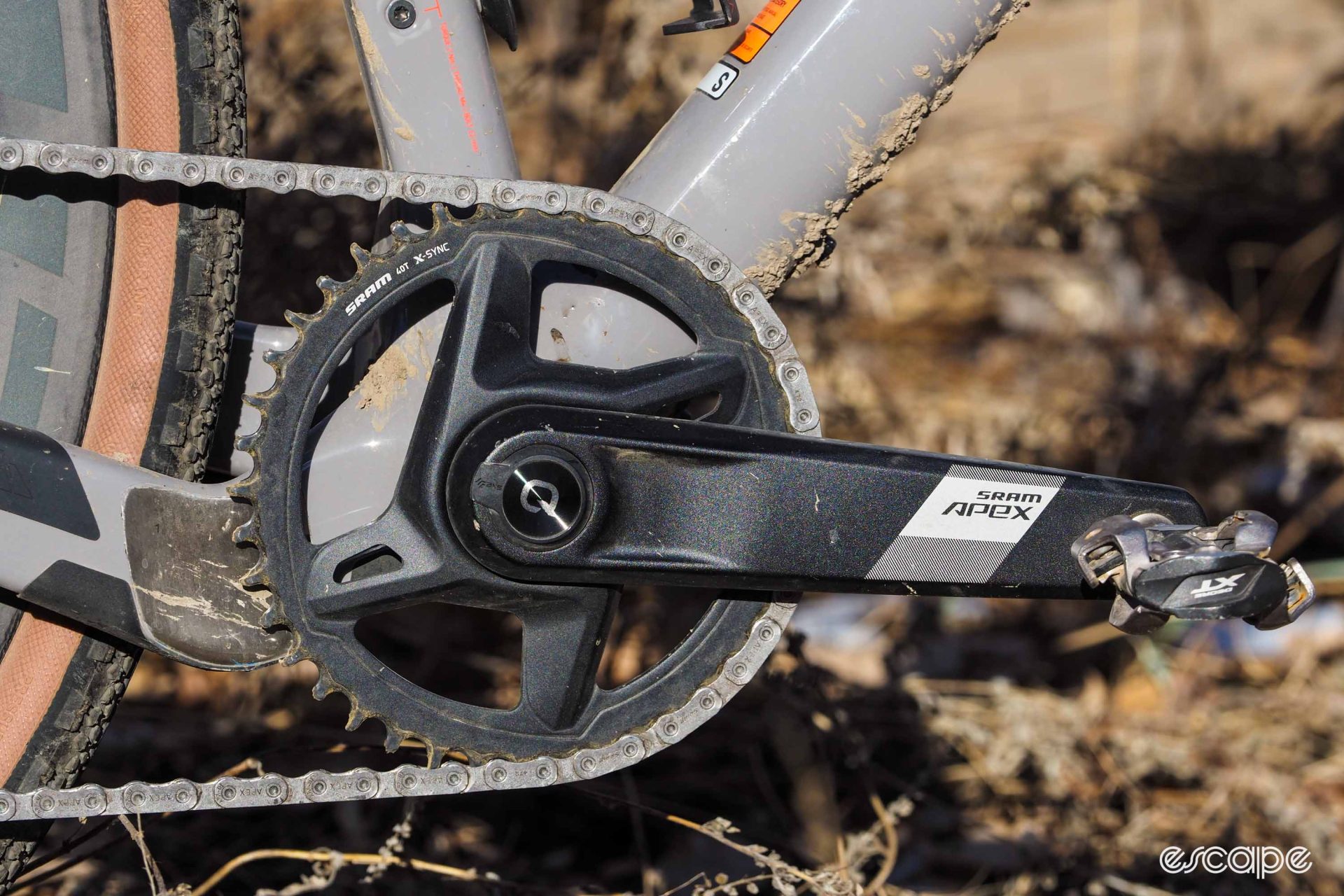
And that single-sided, spindle-based power meter? I found it to work just fine, and others seem to agree. But again, should you really want to get fancy with a spider-based, dual-sided system and don’t care too much about extra weight, keep in mind that eight-bolt chainring interface will offer the best compatibility moving forward.
Something’s gotta give
As I mentioned earlier, hitting that sort of price point doesn’t come without some compromises.
Functionally, the biggest downgrade is the use of an 11-tooth small cassette sprocket instead of the 10-tooth one found on other AXS groupsets. It’s just one tooth, yes. However, when viewed in terms of percentages, that change results in a 400% total range for the Apex AXS XPLR version I tested, as compared to the noticeably more useful 440% total range of upper-end XPLR cassettes.
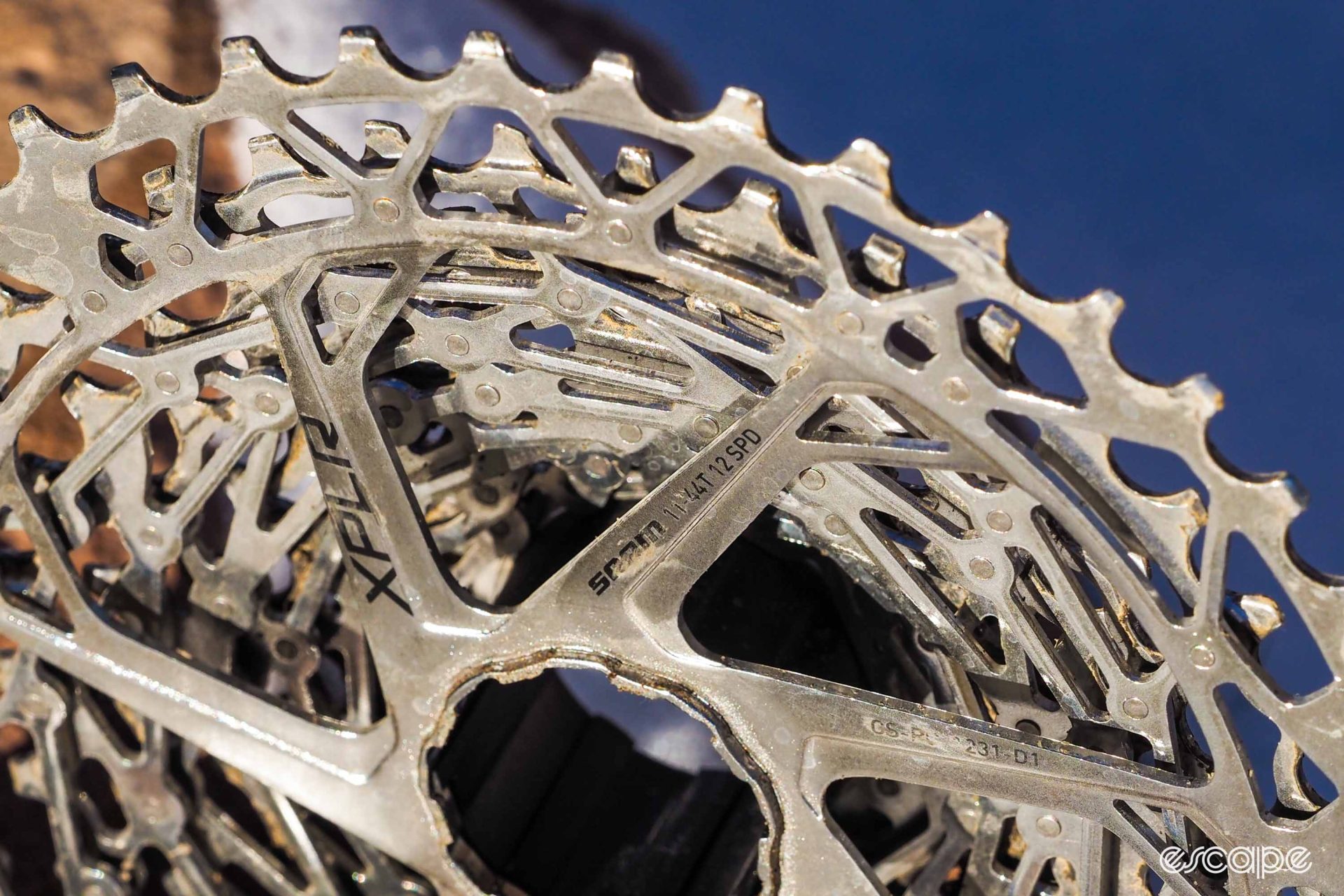
Practically speaking, this isn’t likely to have a huge impact in terms of climbing. As usual, most people will want to select the chainring size that will provide the lowest gear you think you’ll need when heading uphill. I ran my usual 40T chainring and was happy with the easiest 40/44T climbing gear from that combination. However, the missing tooth is felt more acutely at the other end; I was regularly spinning out on even moderately downhill grades. I didn’t find this to be a huge deal when riding solo, but it was definitely a pain when trying to stay with a group, even on just rolling terrain.
Given that SRAM is aiming Apex AXS toward newer riders, I’d argue more range should have been the goal here, not less. And while SRAM would probably fire back that there’s the “mullet” option for riders who want a larger spread, not everyone will want or need that much range. It seems to me that something like an 11-46T could have provided something closer to the nicer 10-44T options at 418% of total range vs. 440%, while still fitting on the less expensive Shimano HG freehub body that was apparently so important for OEM suppliers.
As with Rival AXS, the Apex AXS rear derailleur also makes do with a simpler spring-type pulley cage clutch instead of the hydraulic damper found on Force and Red. Chain control was still more than adequate, which perhaps shouldn’t be any surprise given this is essentially the same system as what SRAM uses on its clutch-equipped mountain bike derailleurs. But like those mountain bike rear derailleurs, the spring clutch on Apex AXS isn’t serviceable. They don’t last forever, either, and once they’re worn out, there’s nothing to do but buy an entire rear derailleur to replace it.
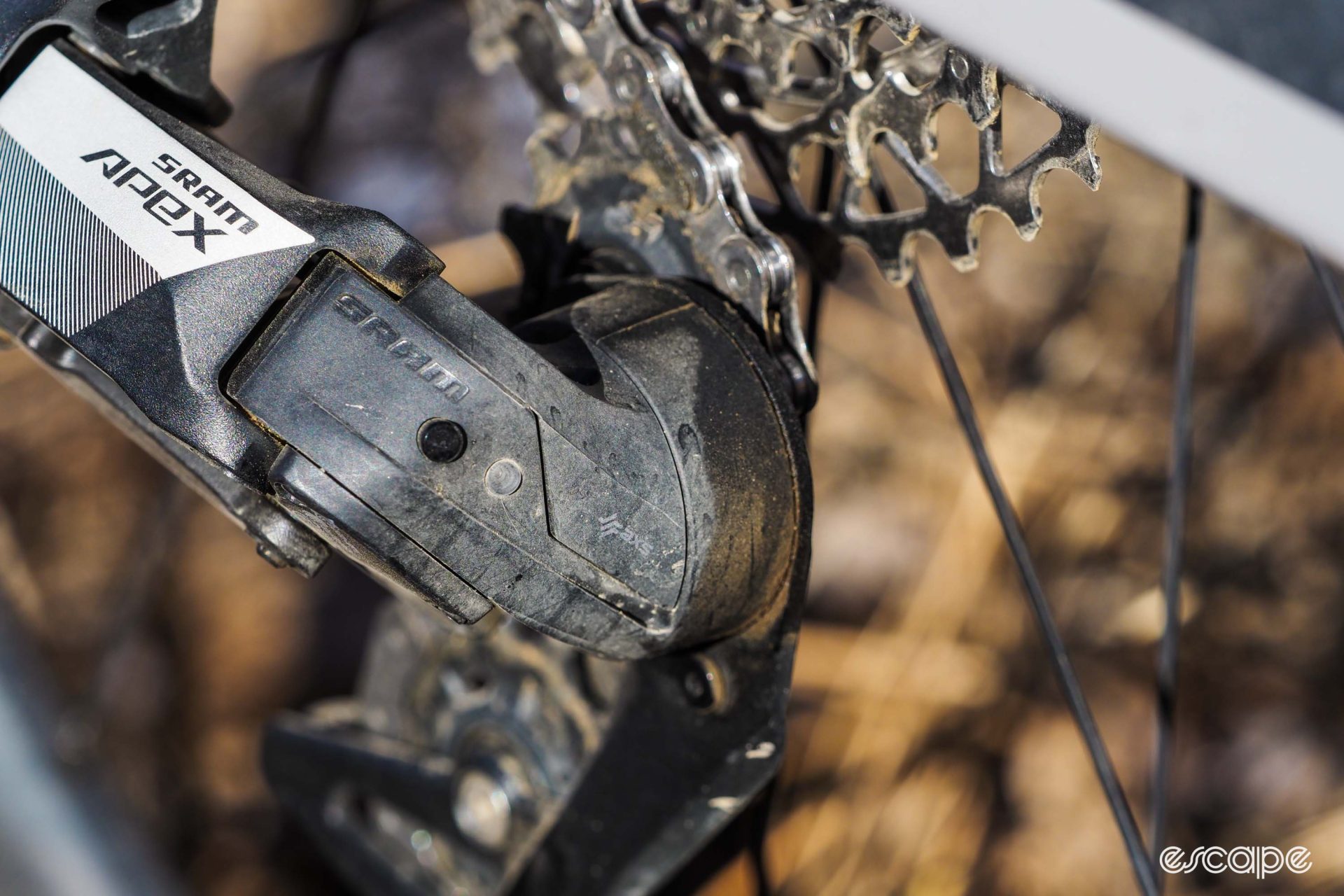
On the upside, it was nice to find proper sealed cartridge bearings in at least the upper rear derailleur pulley on my test sample, which is nice to see at this price point. The lower pulley spins on a solid bushing, but thankfully, pulleys are relatively inexpensive and easy to replace when one eventually wears out.
Six months obviously isn’t long enough for a proper long-term durability evaluation, but I didn’t see any obvious areas of concern, nor did any of the technical details I requested from SRAM raise any red flags. The Apex AXS chain’s more basic finish will likely wear a little faster and be more prone to corrosion than the nickel-chrome surface treatment of SRAM’s nicer AXS groupsets, but other than that – and any potential aesthetic issues with the more economical painted finishes – there doesn’t seem to be anything noteworthy here.
As already mentioned, Apex AXS doesn’t look all that premium, either. The surfaces are rougher than the more polished finishes you see further upstream in the AXS family, and the flat black paint used throughout the Apex AXS range is downright drab. It’s also prone to scratching and scuffing – definitely a concern if you plan to really rally your Apex AXS-equipped gravel bike off-road – although it should at least be pretty easy to touch up.
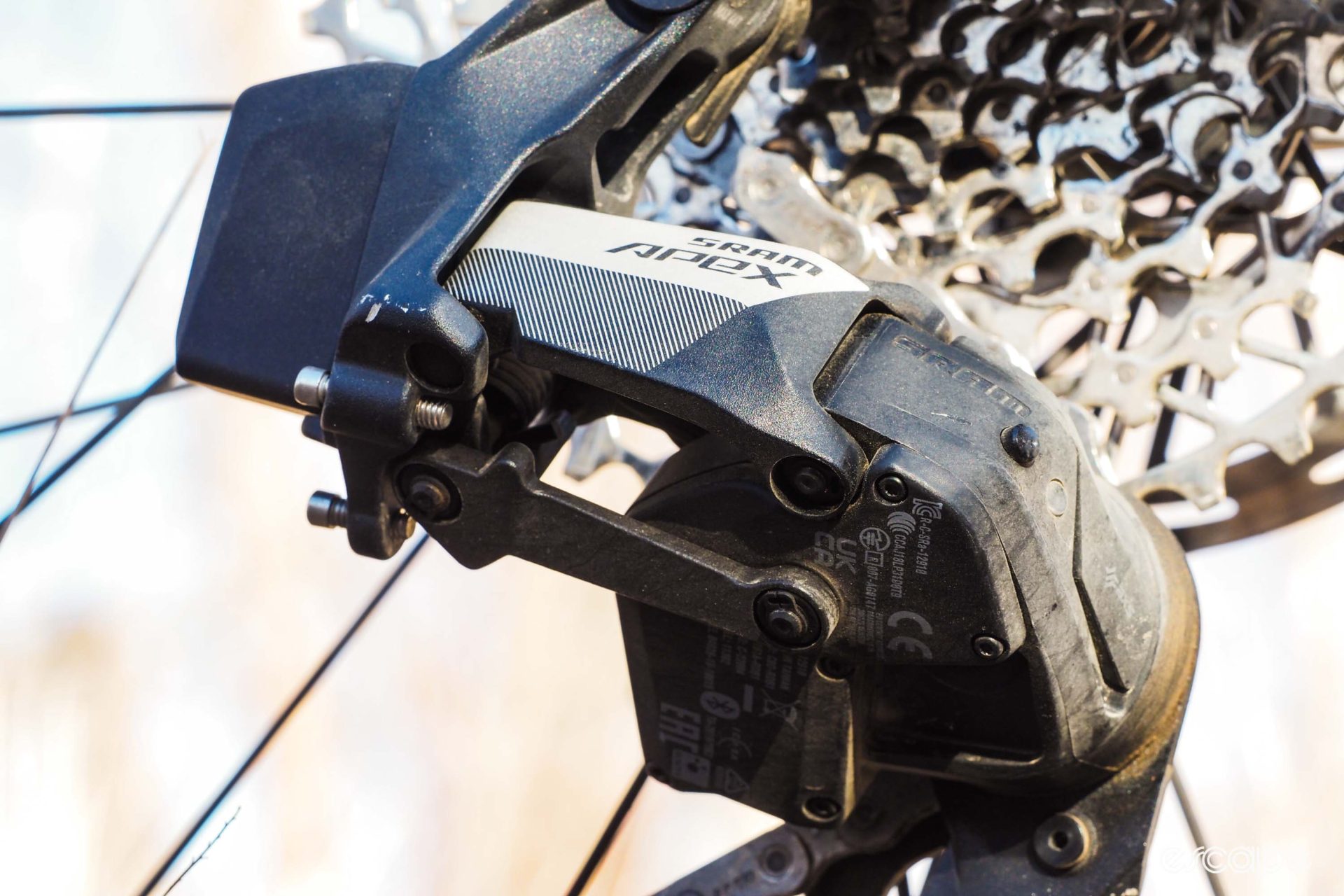
That said, the things your hands touch and feel thankfully don’t feel any different from SRAM’s more recent AXS stuff. The newer lever body style has a substantially smaller girth than before – not all that different from Shimano bodies, in fact – and the bulbous peak of original AXS levers is way smaller than it used to be.
Interestingly, this pays dividends regardless of where your hands sit on the size spectrum. Riders with bigger mitts will be pleased to find more room behind the lever pivot for your fingers to wrap around without fear of getting squished by the brake lever under hard braking, while riders with smaller hands should find it much easier to gain a secure hold on the new levers.
It seems SRAM’s engineers may have forgotten that the new levers need to be mounted to a bar, though. While the hoods themselves are very comfortable, there’s a curiously disjointed transition to the bars. SRAM says this can sometimes result from how some folks wrap their bars, but I’ve noticed this on every bike I’ve had with the newer-style lever shape – including ones that were built and supplied directly by SRAM – so I’m scratching my head a bit on this one as far as how that got through the design phase. In fairness, I haven’t found it to be a big issue in terms of ergonomics or comfort, but it does look sloppier than I’d prefer.
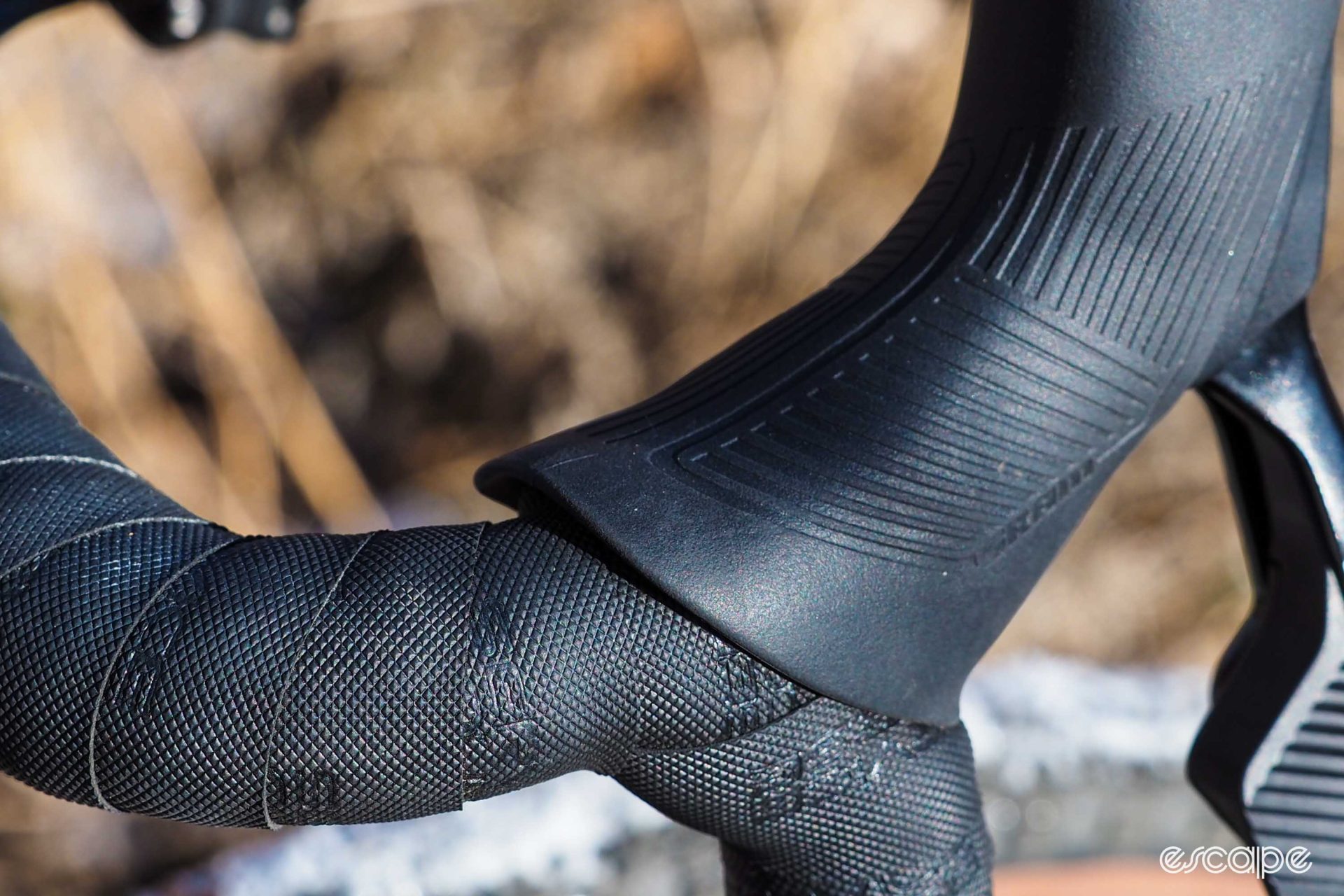
“There’s a wedge-shaped block on the underside of the hood cover that’s intended to fill the gap between hood and bar,” said SRAM’s global road and corporate communication manager, Michael Zellmann. “The design works great on most bars, as long as there’s not too much bar tape. Many mechanics double-wrap that area, causing the back of the hood cover to lift away from the bar. If the hood cover sits high on installation, it generally settles in nicely after a ride or two.”
Battery life was a mixed bag, as I’ve now come to expect after several years of living with AXS-equipped bikes in general. SRAM says road AXS derailleur batteries will last for around 60 hours of riding time, and the shifter batteries are good for about two years. Neither of those figures seem too far off the mark after several years now of riding AXS-equipped bikes, although I’ve definitely noted some inconsistencies. In particular, the system never fully turns itself off, so if you happen to leave the bike lying fallow on the wall for a few weeks, don’t be surprised if the battery level isn’t what you expected it to be – or if it’s even completely dead.
“There remains a very small power draw from a stationary component; it must listen for the accelerometer to wake it up,” said Zellmann. “To eliminate any battery drain, remove the battery.”
My advice? Get a spare AXS battery and leave it on the charger – just in case – and if the bike’s been sitting for a while, use the AXS app to verify the state of charge. Even a low battery isn’t likely to leave you stuck in a single gear on most rides, but it’s best to check before heading out for a long ride.
Mix-and-match
Say what you will about the lack of serviceability for SRAM AXS electronic components – those criticisms are absolutely valid, although it’s at least worth reminding folks that applies to electronic groupset components from other brands, too.
One distinct bright side to SRAM’s AXS ecosystem, however, is its broad compatibility. With few exceptions, any one AXS component can “speak” to any other one. From a DIY perspective, that means you can mix and match AXS bits to suit your particular wants and needs – not to mention your budget. Should you want them, upgrades to nicer AXS components shouldn’t be an issue down the line, and savvy DIYers will be able to save a fair bit of money with some smart mixing and matching.
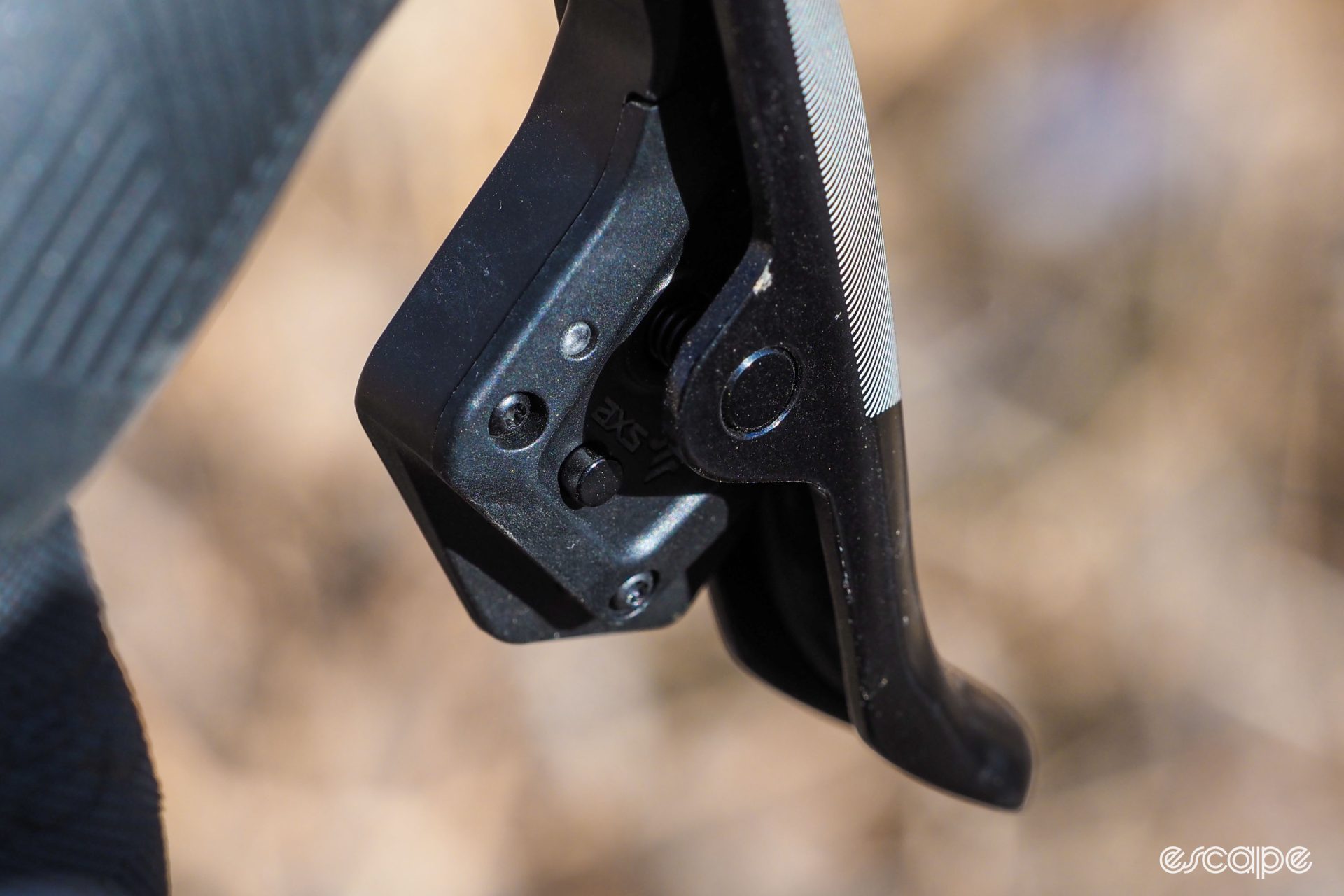
If you prefer to keep things simple, SRAM has done a good job with Apex AXS’s rather narrow configuration possibilities, to the point where if someone is primarily interested in keeping tight reins on the bottom line, there isn’t much motivation to reach into different parts bins.
There is one exception, however: the cassette.
Both of SRAM’s higher-end XPLR cassettes feature a more useful 10-44T spread instead of the 11-44T one found on Apex. And notably, the PG-1251 10-44T cassette – one step up in the range – is only US$34 more expensive at retail than the PG-1231 11-44T one. Riders who end up with the full Apex AXS groupset via a complete bike will unfortunately need to factor in the cost of switching the freehub body since the 10T sprocket will only mount to an XDR driver. However, if you’re a DIYer looking to get electronic shifting on a budget for your next gravel build, the PG-1251 cassette is an absolute no-brainer.
A shift in priorities
Shimano recently introduced its 105 Di2, and while I still find that company’s electronic shifting performance to be slightly better than SRAM’s overall, 105 Di2 is still a road-oriented groupset with narrower appeal than Apex AXS. Moreover, both 105 Di2 and the forthcoming GRX Di2 are far more expensive than Apex AXS, too.
Critics will rightfully point out that Apex AXS is a very heavy groupset, and sure, weight weenies will unquestionably want to look elsewhere. However, SRAM has bet that there are more people who prioritize the shifting performance of an electronic setup than lower weight, and I’d say they’ve wagered wisely.
More information can be found at www.sram.com.

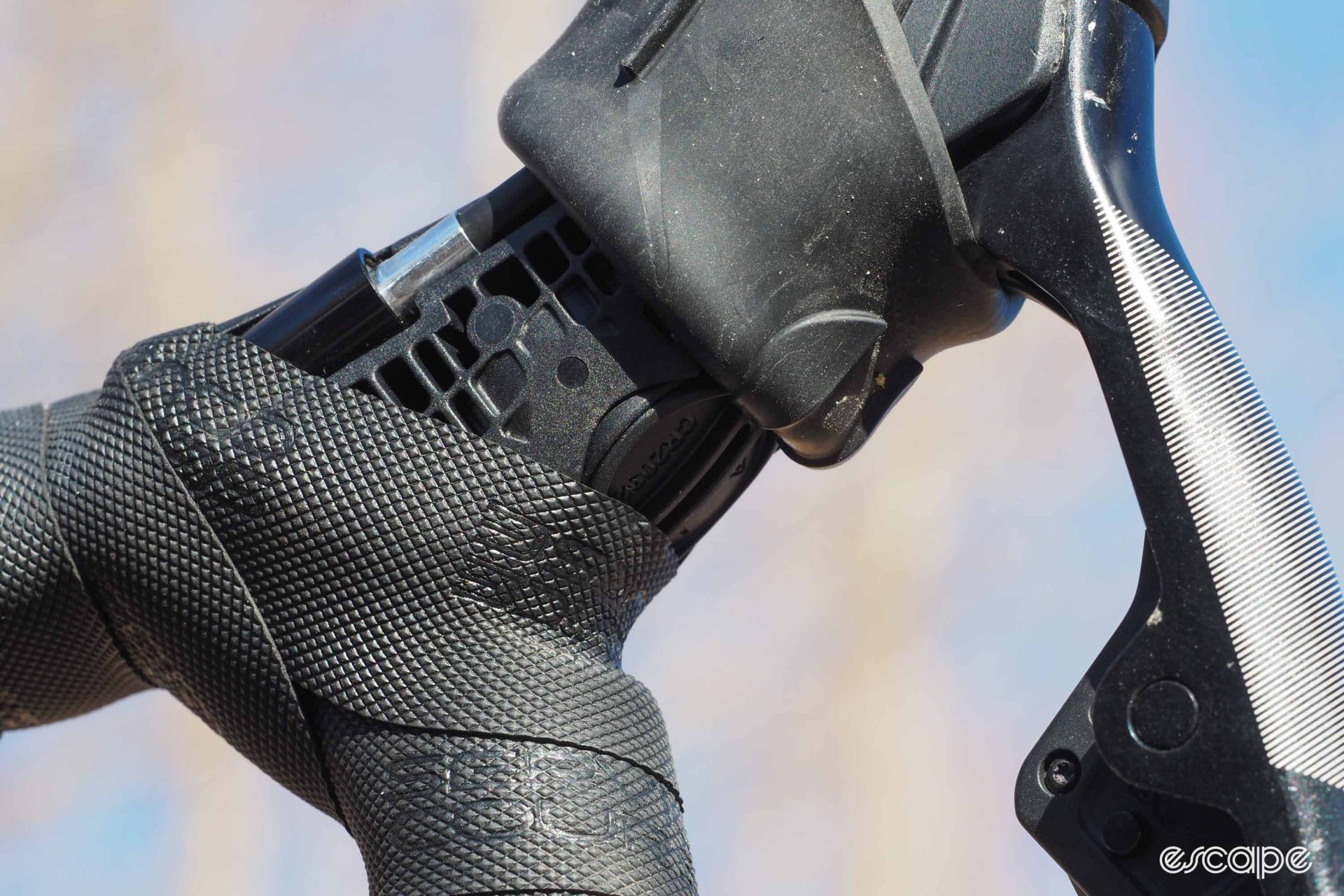
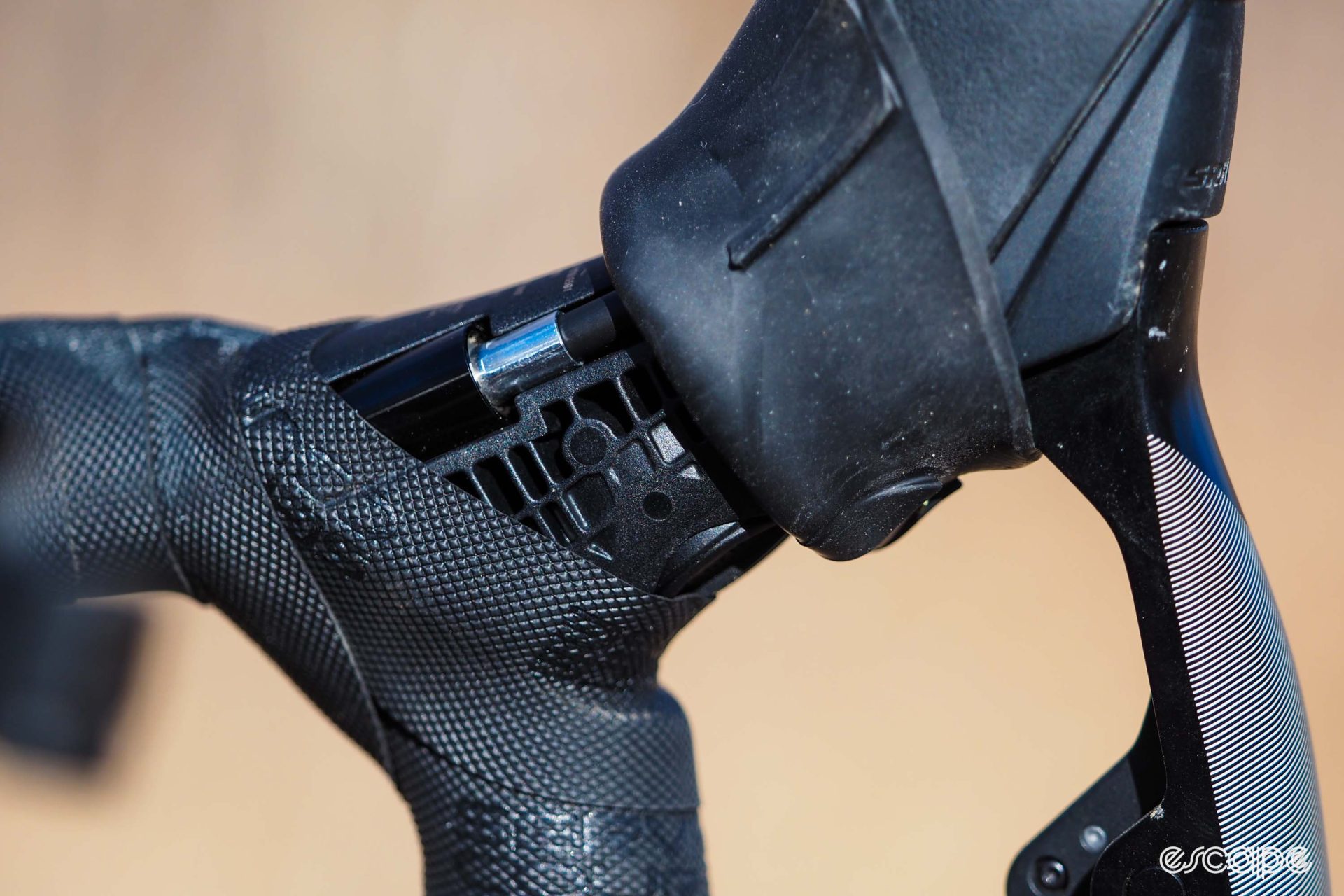
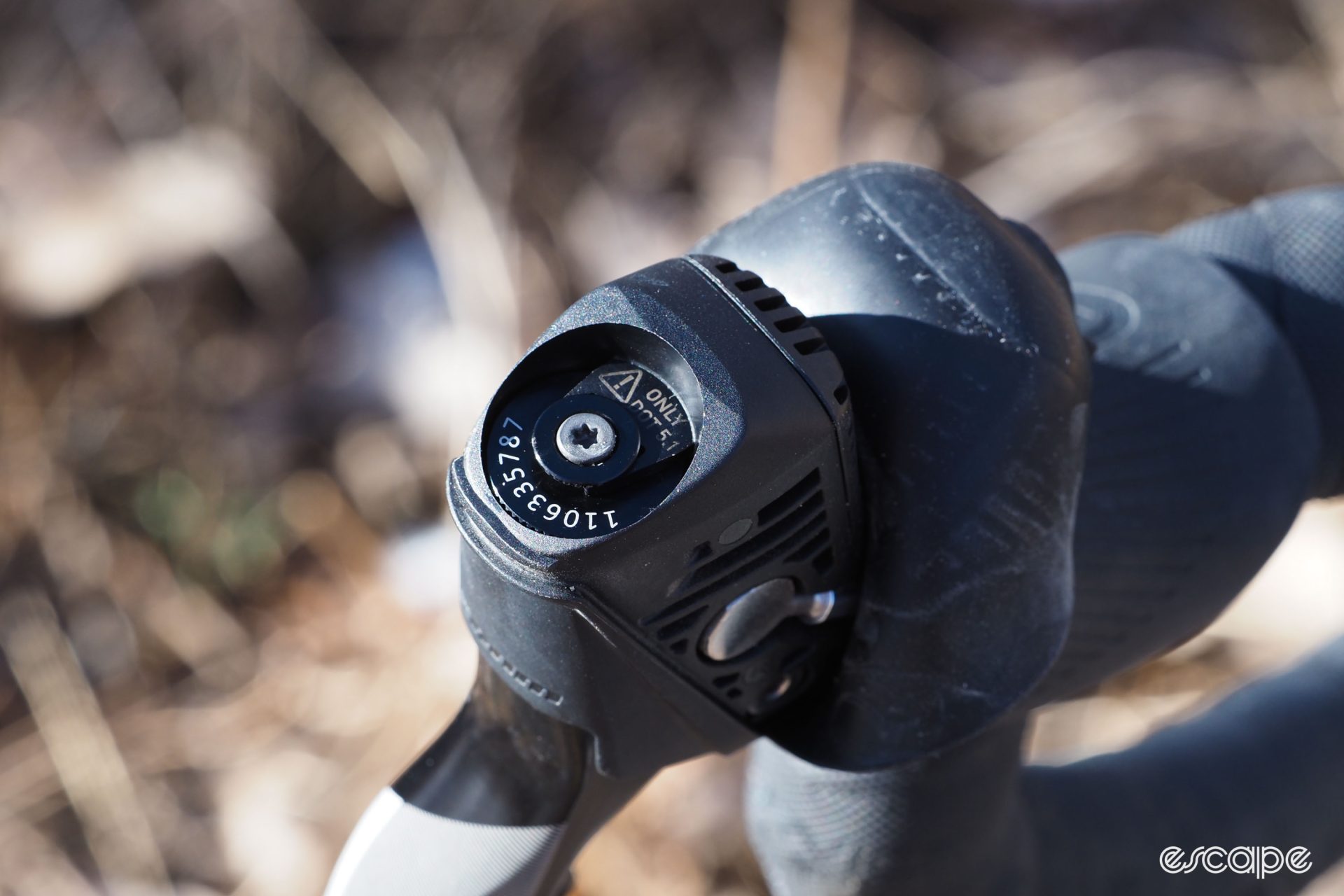
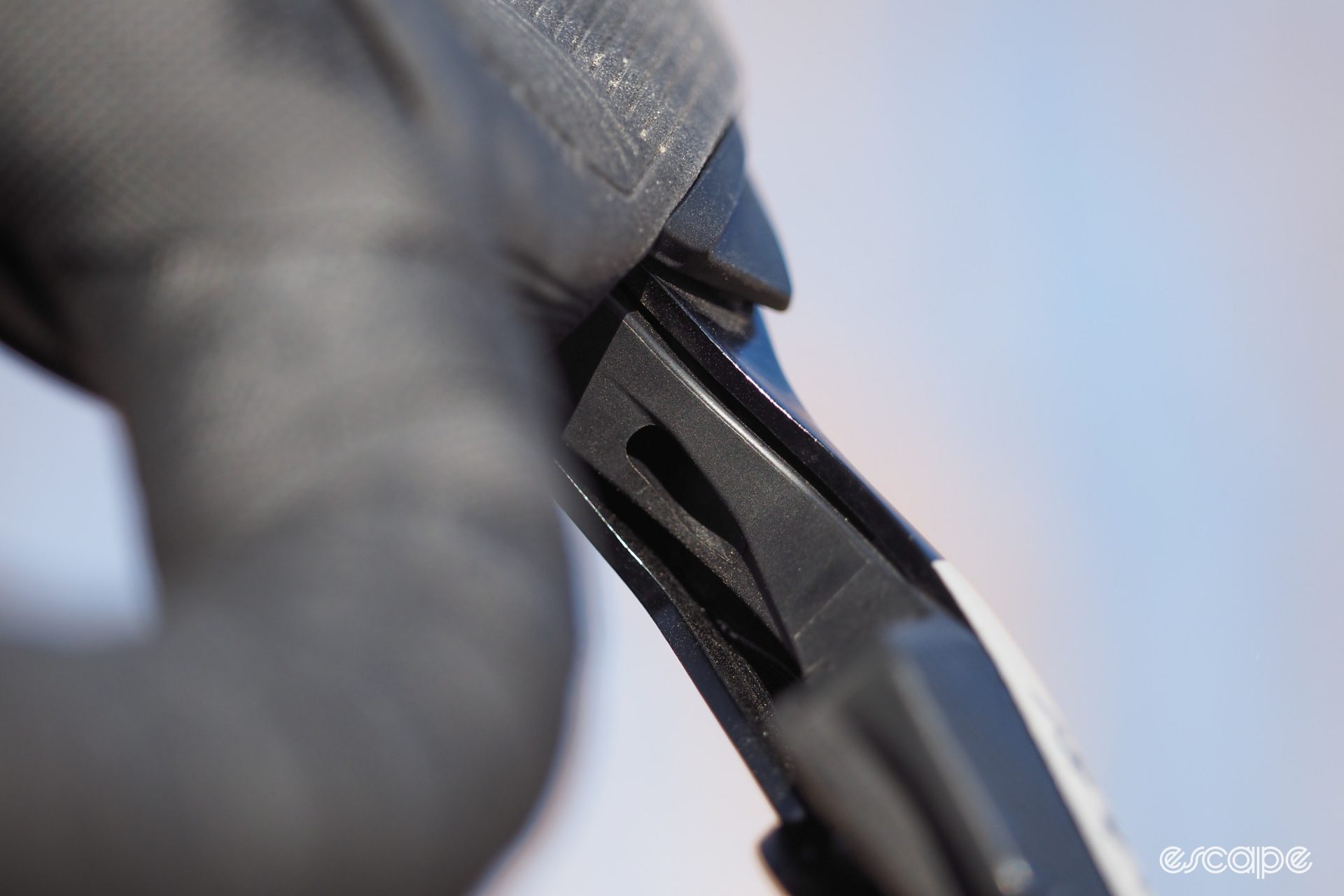

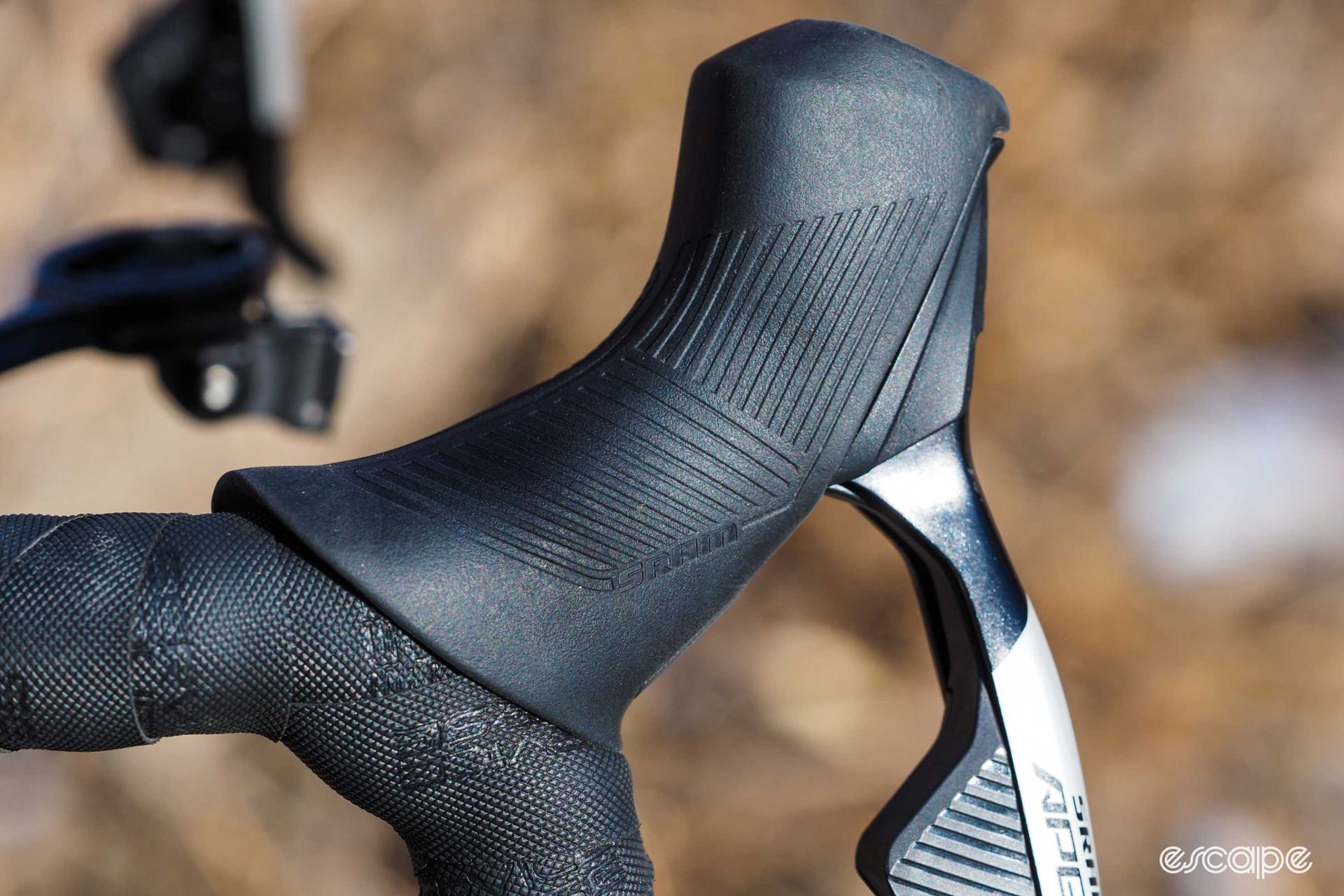
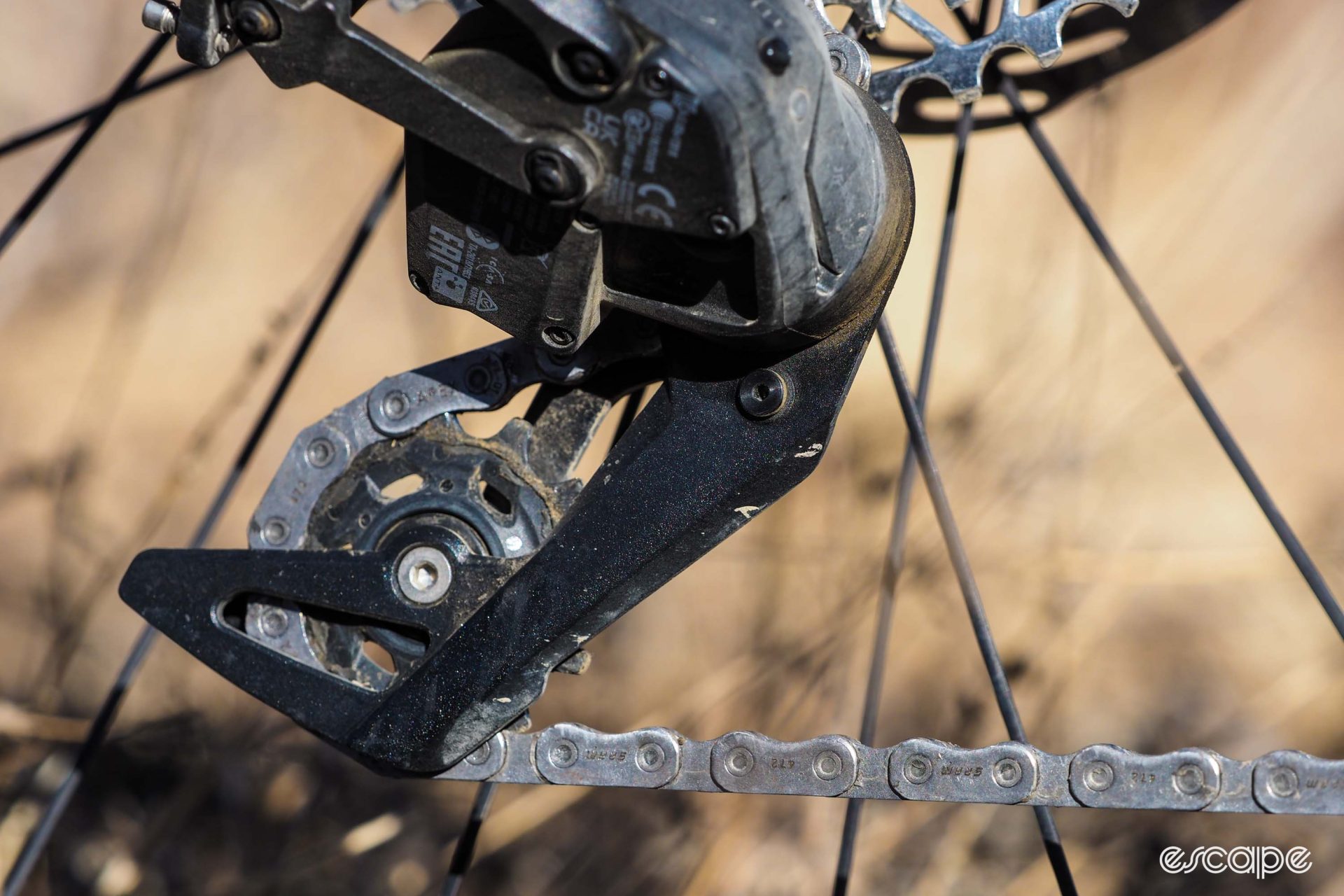


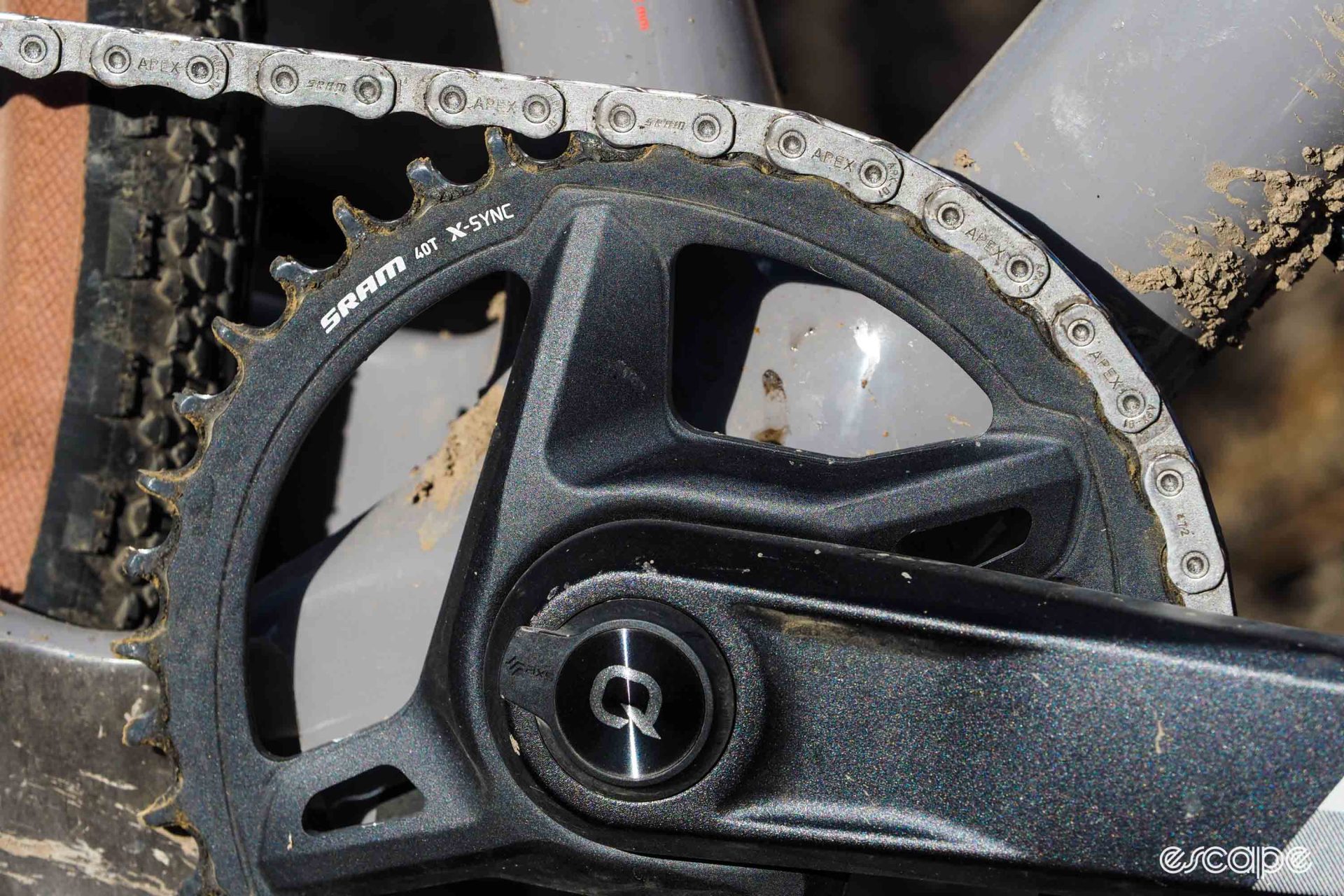

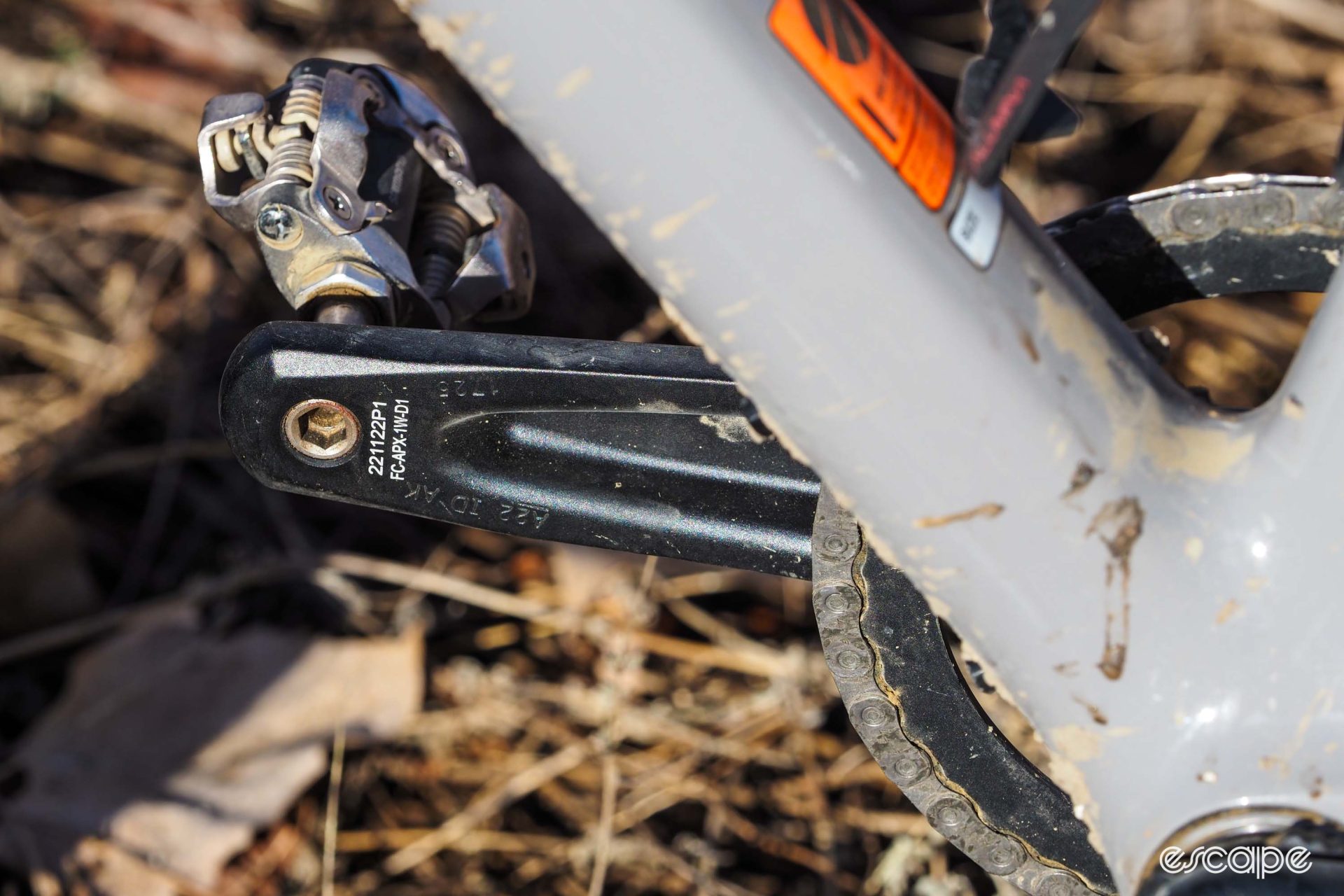
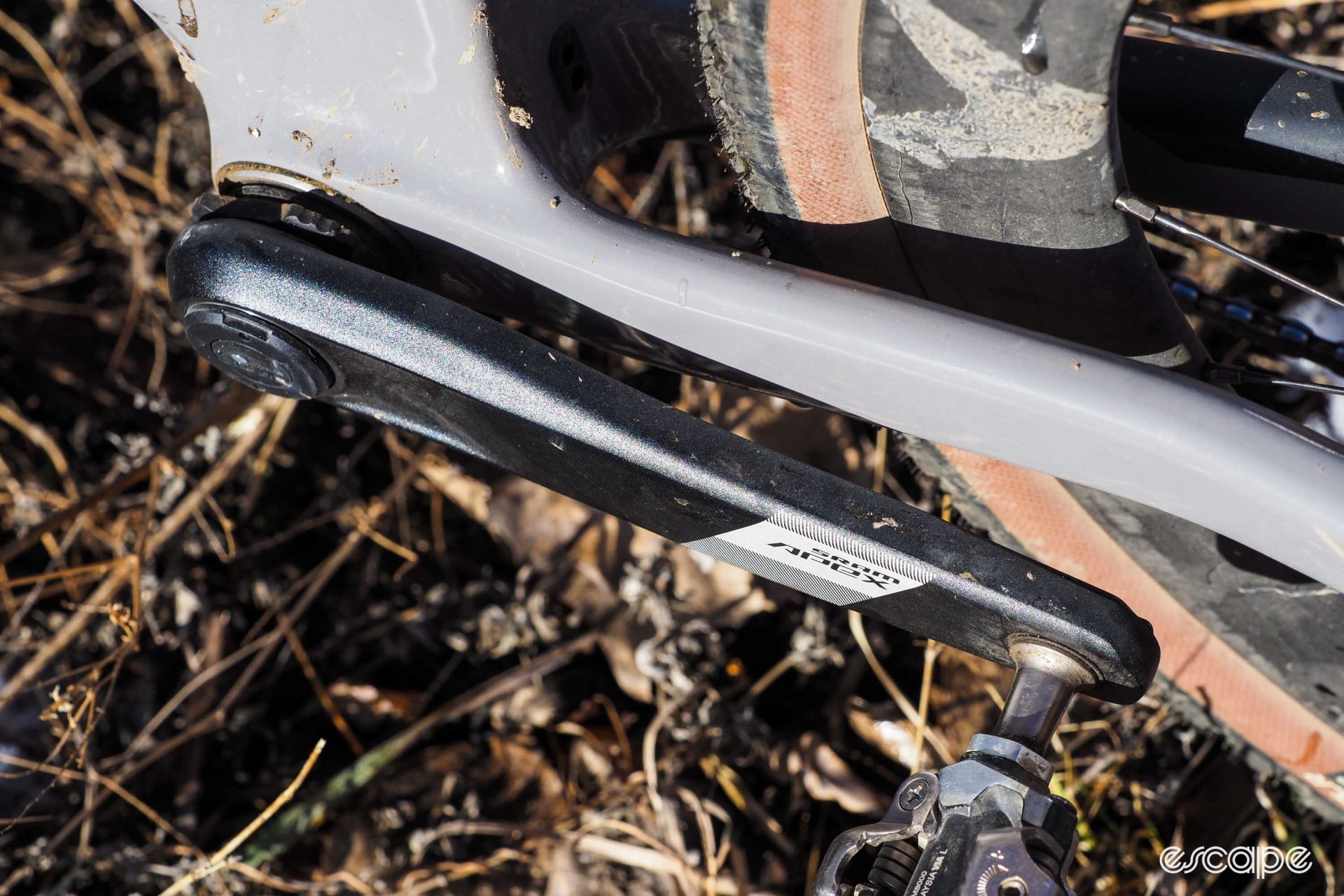
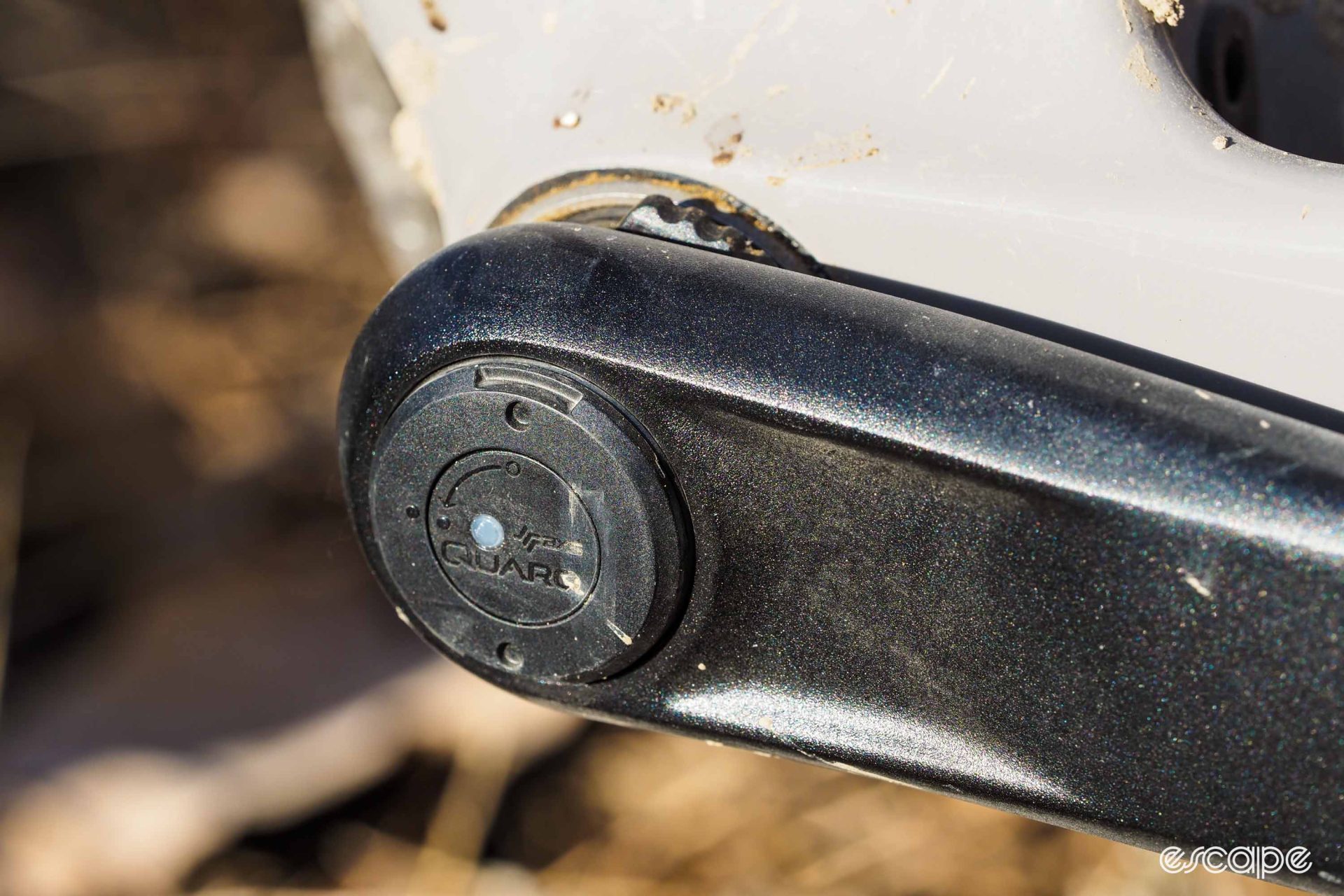

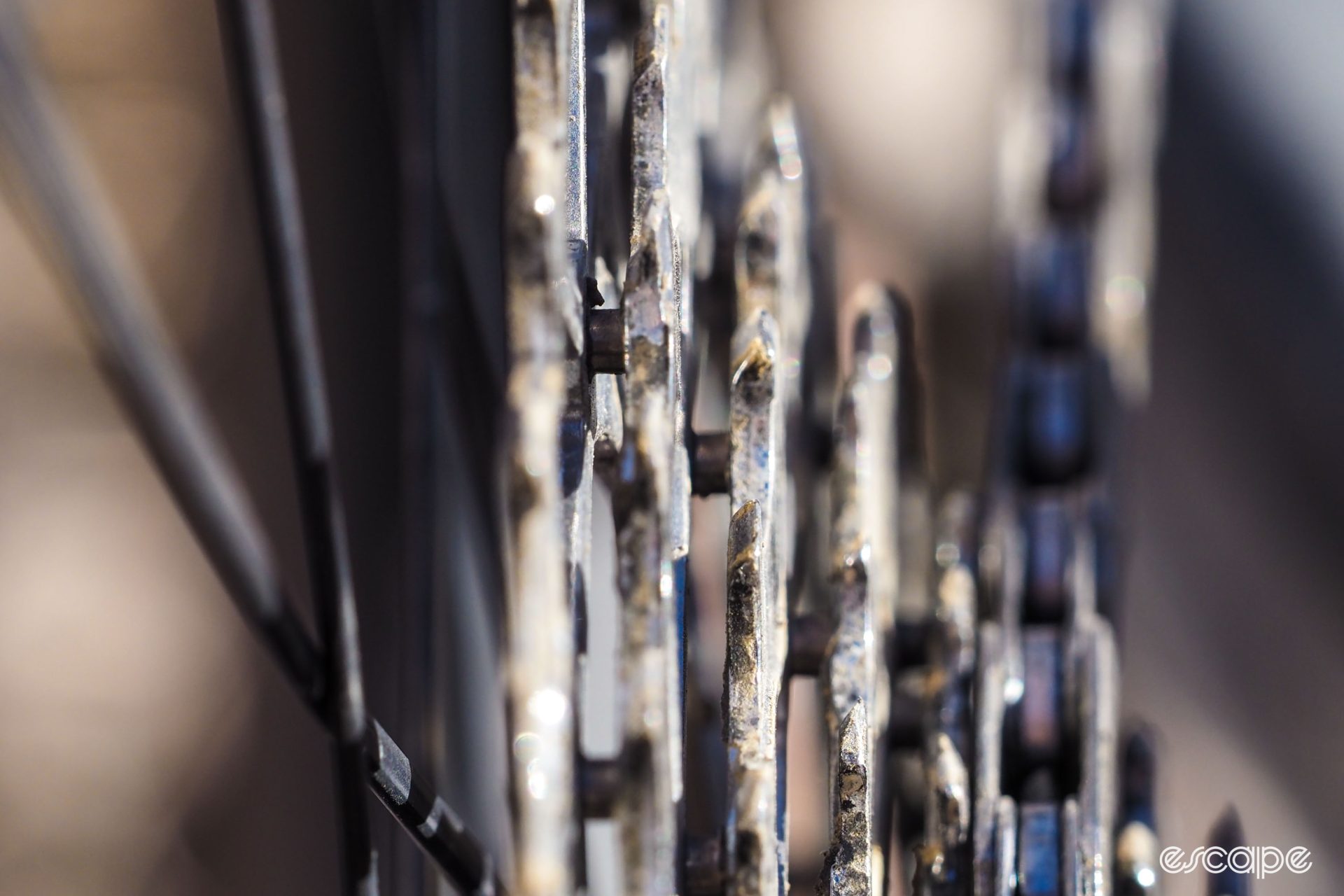

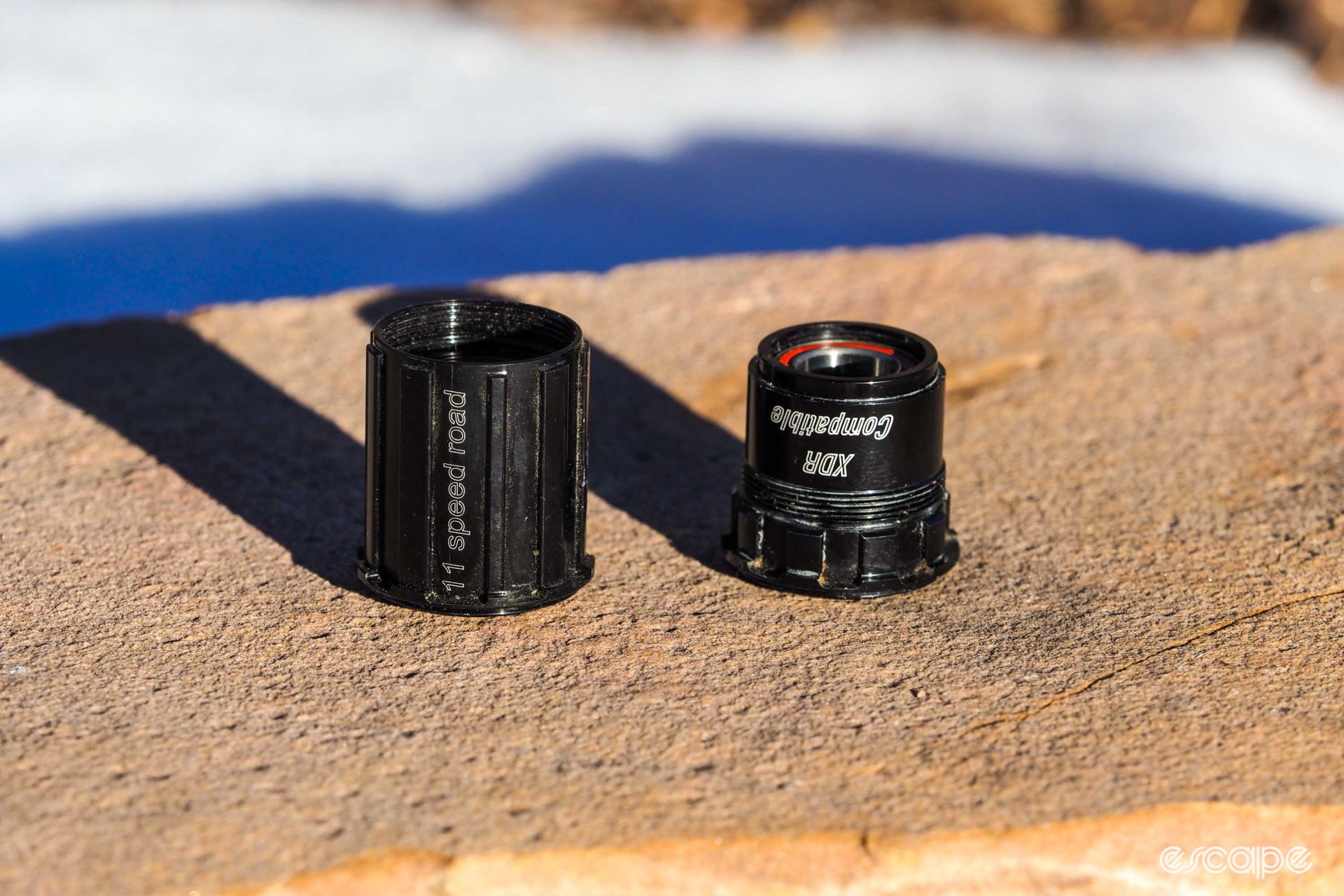


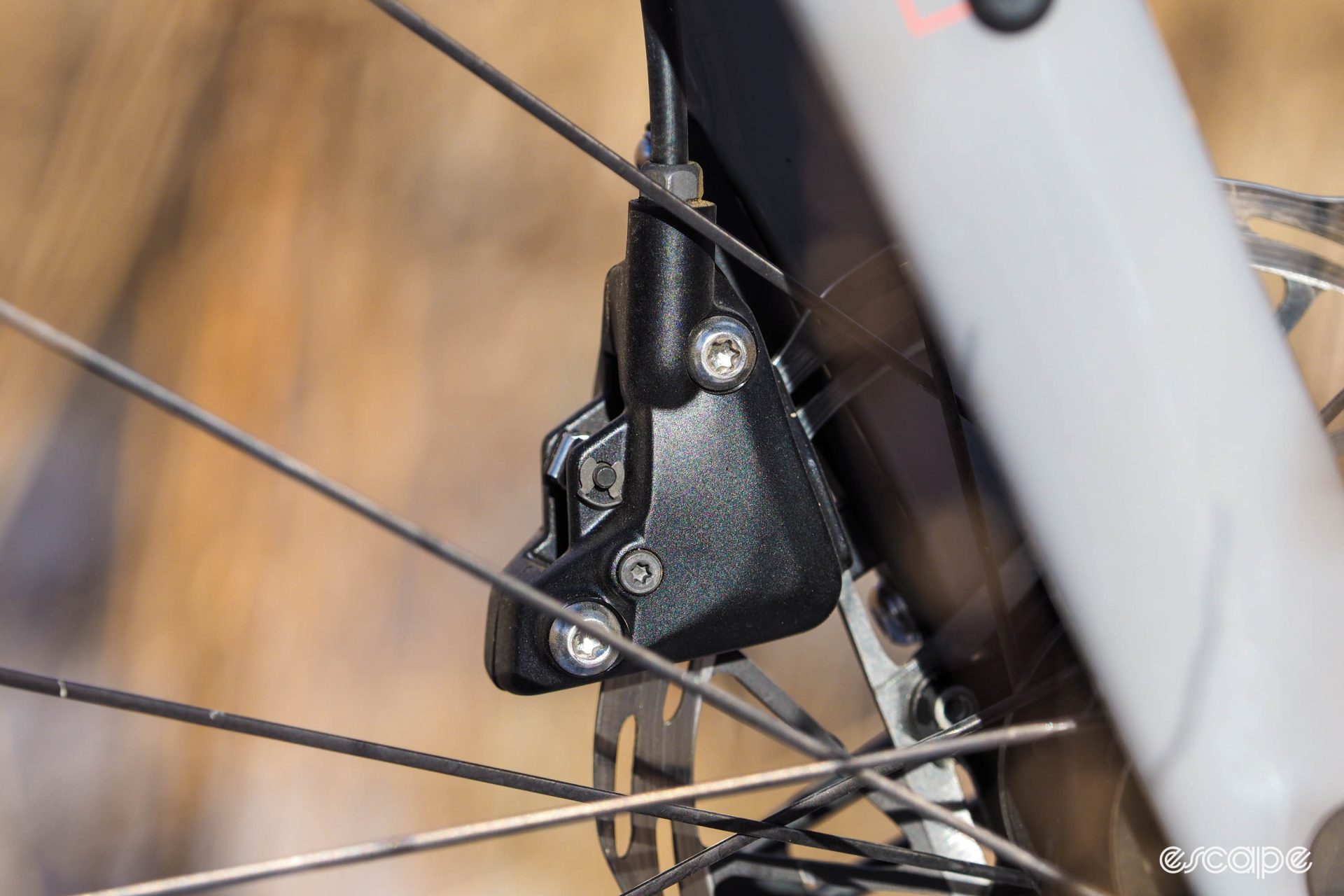
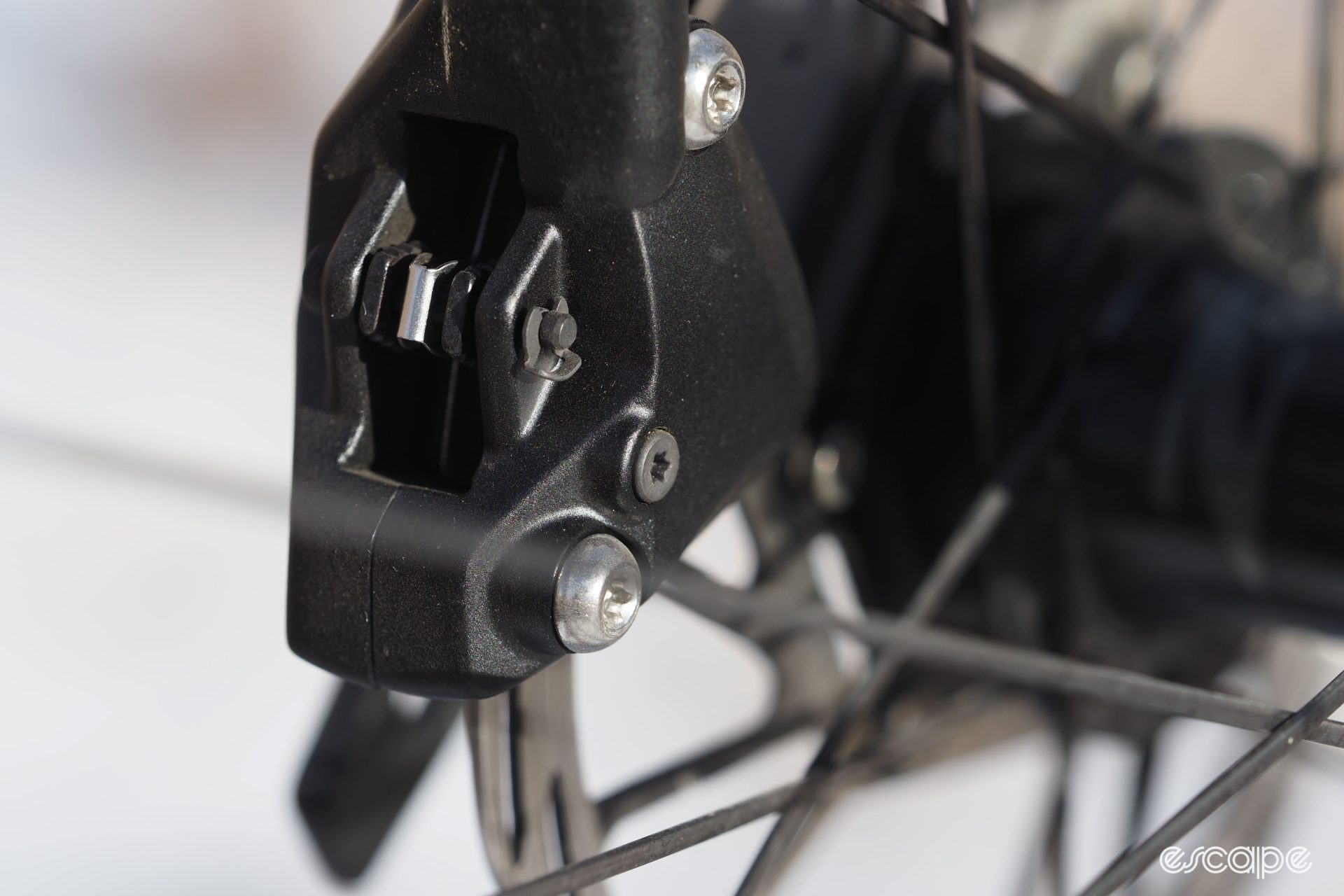
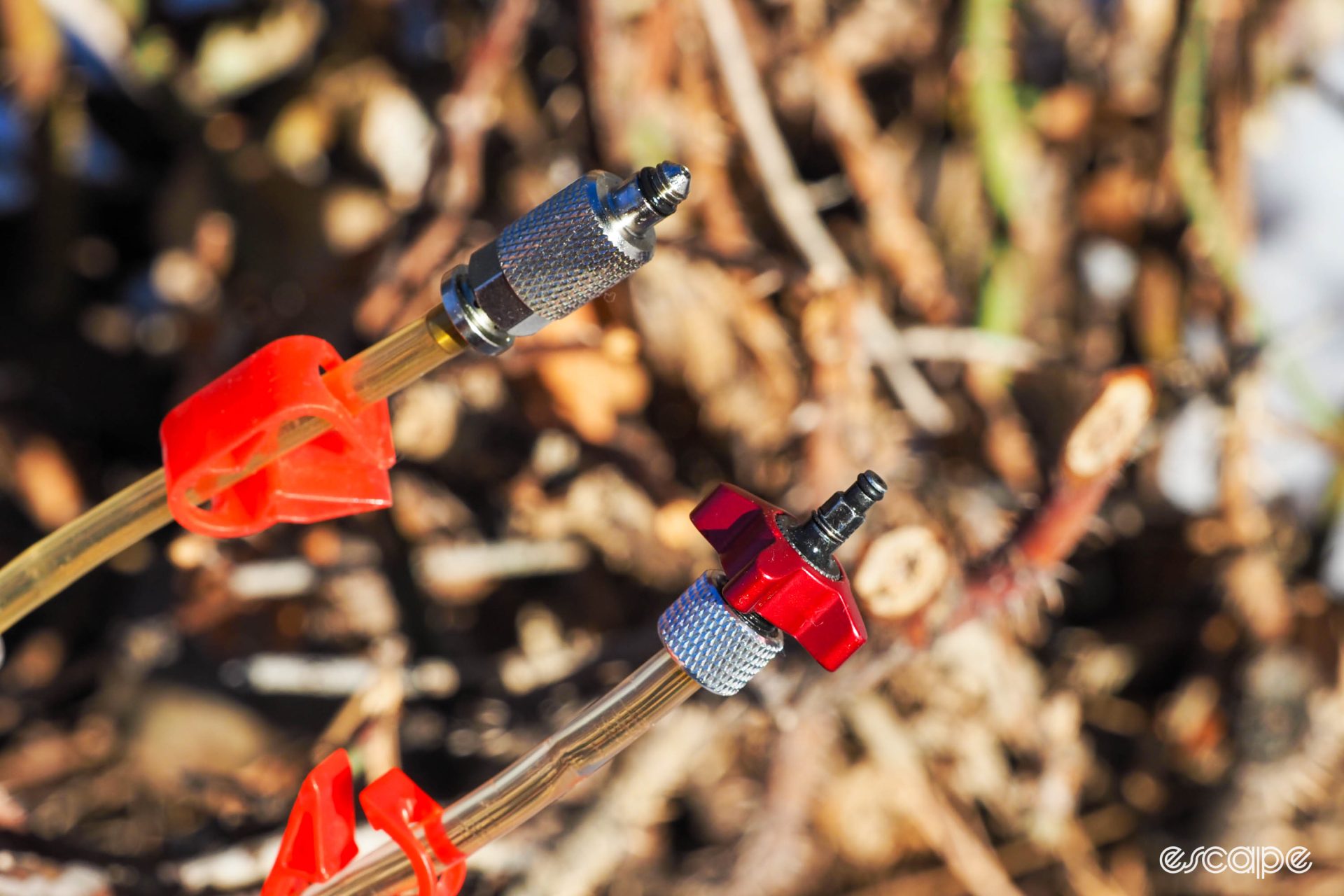
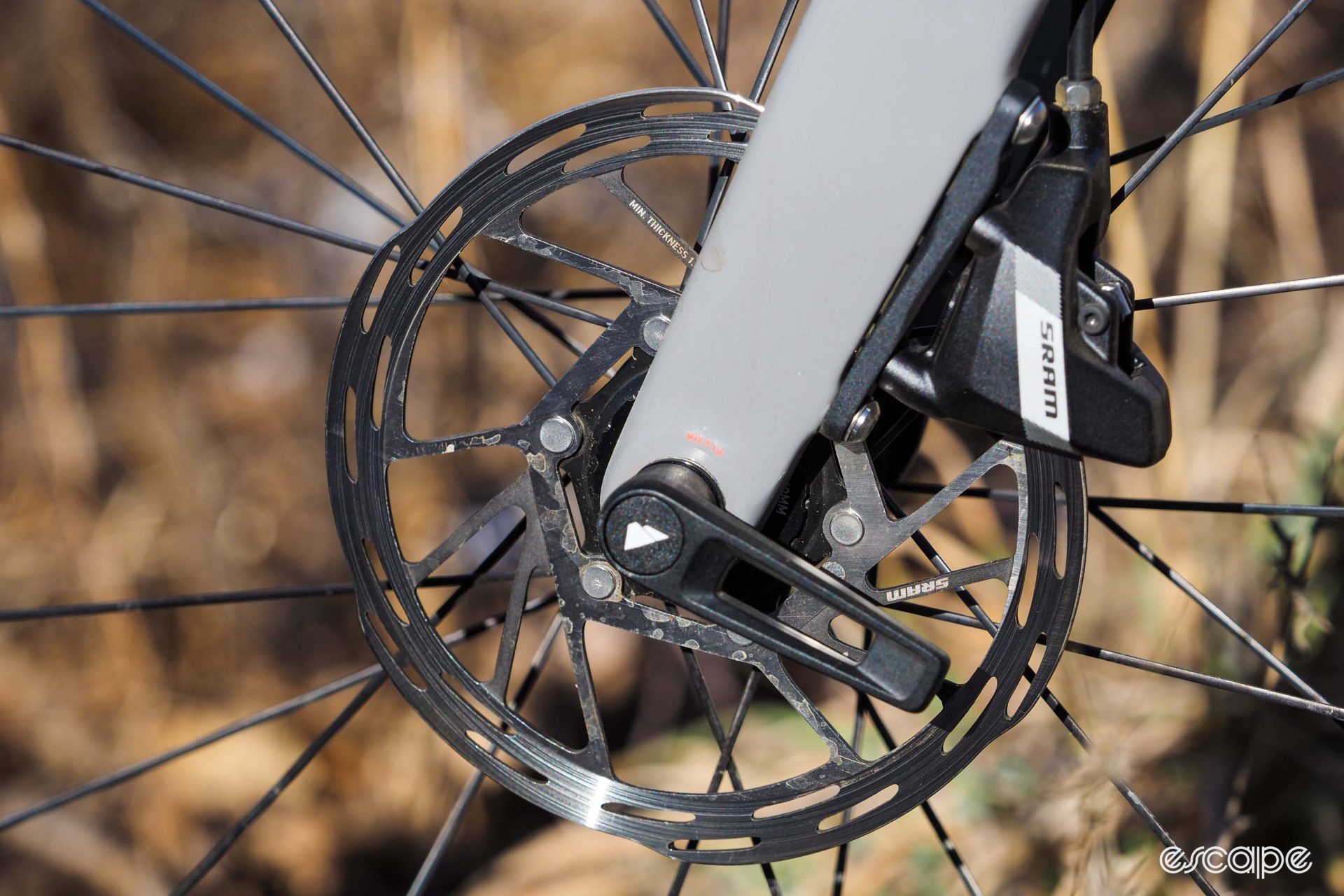
What did you think of this story?
